- Spirit 1.0 Plus
- Spirit 1.0 Evo
- Pod Drive Evo
- E-Series Battery
- G102-100 Battery
- Find a Dealer
- Have a Dealer Contact Me
- Product Registration
- Support Center: FAQ & Guide
- Video Tutorial
- Download Center
- Performance Bulletins

Inboard Electric Boat Motors: A Comprehensive Guide
With increasingly powerful electric inboard motors released, what are your thoughts? Would you buy one to own a completely green boat?
In the past, many held a skeptical attitude toward inboard electric propulsion. The good news is that the electric boat motor has made a host of breakthroughs with cutting-edge technologies, such as the highly efficient LiFePO4 battery and regeneration for extended running time, etc.
This post will introduce the latest information and insights on the electric inboard boat motor to help you decide whether it’s time for you to invest in an electric inboard motor.
Table of content:
- What is a Boat Inboard Engine
Which Situation Suits Inboard Motor
- What is the Advantage of Inboards
- Inboard Motor Recommendations
What is a Boat Inboard Engine?
In contrast to the outboard motor with a marine engine outside the hull of a boat, an inboard boat motor is an engine housed within the hull of the watercraft.
In other words, an inboard boat motor, whether it’s powered by gas, diesel, or electricity, is mounted inside of a boat permanently and helps power a prop shaft through the hull.
Inboards are more desirable for sailboats, motorboats, commercial boats, workboats, and marine boats for city tours because they’re generally higher displacement engines with broader power ranges vs. the equivalent outboard horsepower ranges and tend to be smoother and quieter.

Actually, inboards are the best thing you can own for just going to watersports. They are also some of the easiest boats to work on since they are such a simple drive train.
For water sports, the inboard is safer because the person in the water would not be as close to the propeller or sharp skeg on an outboard, but a safe captain makes all the difference. You’ll probably get better and stiffer rudder torque and more power to pull multiple people or a huge tube with an inboard.
For sailboats, we highly recommend the electric inboard boat motor too.
Regarding dinghies that sailers bring during sailing, the electric outboard is suitable because it is easier to maneuver for docking and better for leaning on, and our top-selling electric outboards are Spirit 1.0 Plus (comparable to 3hp) with detachable floating batteries and Navy Evo (comparable to 6hp- 9.9hp) with hydrogeneration.
What is the Advantage of Inboards?
Did you get bothered by a variety of problems with gas engines or diesel engines on boats? Then consider switching to the less complex electric inboard boat motor.
Troubles with Traditional Marine Engines
One of the most conspicuous problems with conventional marine propulsion engines is mechanical. The pull-start diesel inboard engine boat that came with many boaters was a nightmare. For instance, the obnoxious low oil pressure beep of diesel, the need to inspect the coolant system, the oil level, the tightness of your belts and pulleys, etc.
The other main problem with internal combustion engines is greenhouse gas emissions. In order to achieve zero-emissions shipping, some countries have released regulations banning the use of conventional boat motors. So it’s wise to choose the electric boat motor for your watercraft from the beginning.
Note: CO2 emissions from energy combustion and industrial processes, 1900-2021
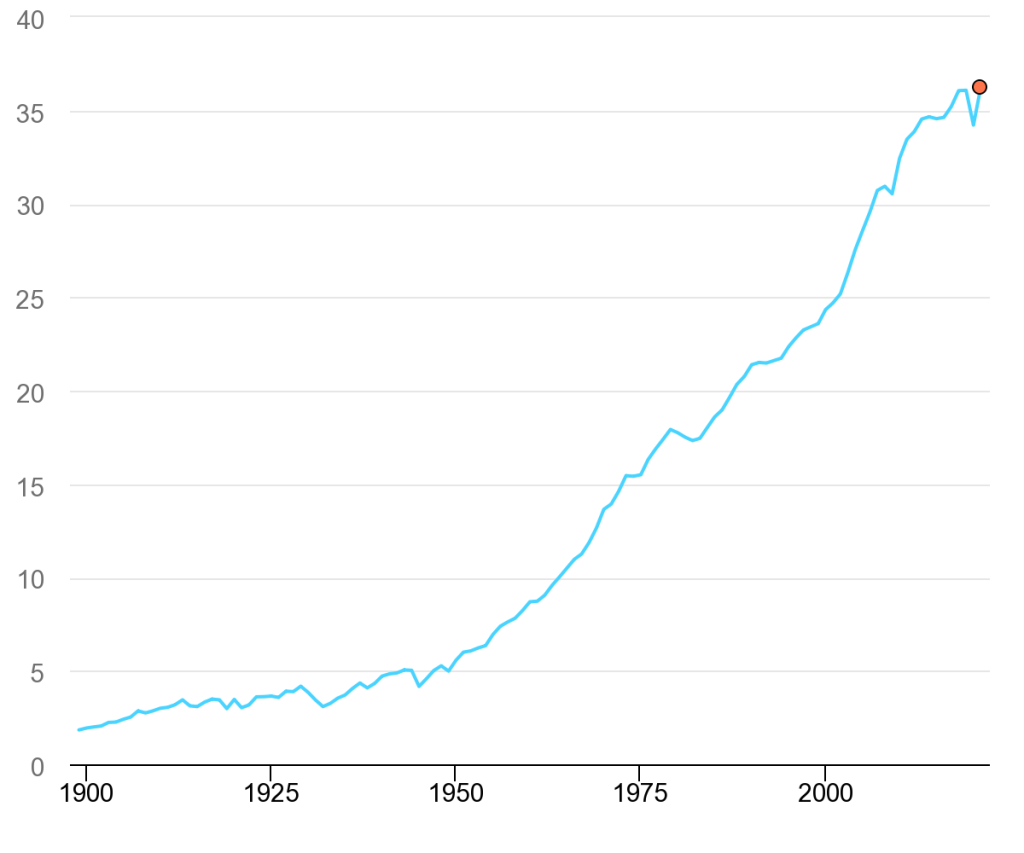
Source: www.iea.org

Source: www.climatecentral.org
Comforts with Electric Inboard Boat Motors
How fantastic it would be if we were just able to sail and not have to worry about being a diesel mechanic. A green boat with an electric inboard motor can make this come true.
As opposed to complex gas motor boats, an electric inboard motor has dramatically fewer moving parts to break, much less vibration from the propeller, no fuel filters, no oil leaks, no water contamination, no service headaches, and no rusting exhaust elbows or diesel bugs to be concerned about.
Electric Inboard Motor is so quiet that sometimes you don’t even notice its existence. While you take pleasure in journeys on the water with electric drives, like fishing, skiing, cleaning, cruising, and so on, what you can hear is peaceful, soothing, and gentle ocean waves, birdsongs, and gulls rather than bothersome noise that may scare off fishes and birds.
If you would like more power, in addition to having high-quality batteries, you can also convert the motor to create hydro-power, which is turned on by a switch, or just charge it with solar power. ePropulsion I-Series features hydrogeneration to collect electricity from wind and water.
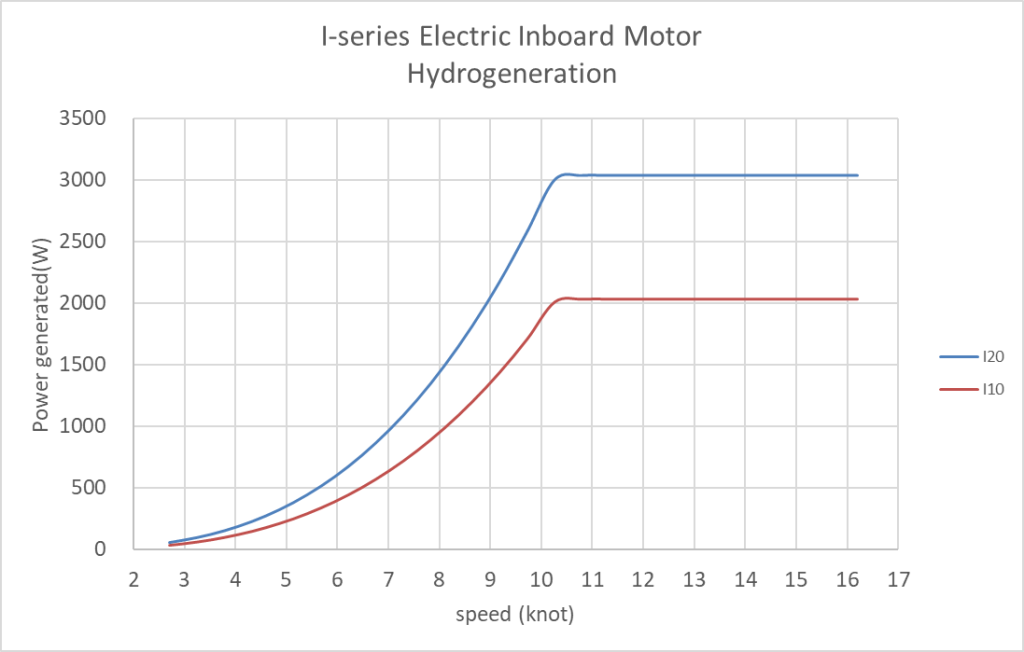
Multifunctions of Battery Power
Electric propulsion is ideal for daysailers. One of the advantages is just having the opportunity for massive electric loads, such as those for electronic and cooking purposes (daysailors just need to bring kitchen appliances).
Inboard Recommendations
Whether offering propulsion for a newly built boat or for retrofitting a vessel, I-Series and H-100 electric inboard motors are a great option for sailboats, motorboats, fast yacht tenders, vessels for city tours, and so on.
ePropulsion clearly understands what aspects boat owners care about most and what they have complained about with their existing electric inboard motors: large and very complex to deploy, lack smart and user-friendly control system, unstable batteries, etc. With a mission to create a better sailing experience, we strive to develop I-series and H-100 electric inboard motors. The following two sections will elaborate on them.
I-Series Electric Inboard for 15-60ft Boats
With integrated modules, the I20 inboard boat motor takes up 60% less space and is more than 65% lighter than traditional internal combustion engines, and 30% lighter than other brands of electric inboard boat motors of a similar range. (Under same input power).
Smart System Architecture (eSSA) features a complete fault diagnosis system, so it can detect equipment failures to automatically shield and protect the continuous operation of the boat.

The Built-in IoT (ePropulsion Connectivity) is industry-leading, allowing boat owners to access cloud-based connectivity services without adding additional accessories.
As to the performance of speed and duration of ePropulsion I series electric inboard motors, we listed specific data for your reference.
- I10 Inboard Motor with a 10kWh Battery
| speed in km/(knots) | Range in km(n mile) | Running time in hour | |
| Slow(2kW~5kW) | 6(3.2) | 12~30(6.4~16) | 2~5 |
| Full throttle(10kW) | 13~20(7~10.8) | 13~20(7~10.8) | 1 |
- I20 Inboard Motor with a 20kWh Battery
| speed in km/(knots) | Range in km(n mile) | Running time in hour | |
| Slow(2kW~5kW) | 6(3.2) | 24~60(12.8~32) | 4~10 |
| Full throttle(20kW) | 14~28(7.5~15.1) | 14~28(7.5~15.1) | 1 |
- I40 Inboard Motor with a 40kWh Battery
| speed in km/(knots) | Range in km(n mile) | Running time in hour | |
| Slow(2kW~5kW) | 6(3.2) | 48~120(25.6~64) | 8~20 |
| Full throttle(40kW) | 16~35(8.6~18.9) | 16~35(8.6~18.9) | 1 |
Note: Depends on the type of boat, load, propeller, and conditions. Speed and range indications do not represent a legal guarantee.
H Series Electric Inboard for 30-120ft Boats
The H-100 (60-140kW) is an electric inboard motor with a full displacement of up to 200 tons, designed for large sailboats, catamarans, small passenger and cruise boats, commercial workboats, along with large cruisers or dinghies in fresh water.
The new H series electric boat motor will be suitable for various scenarios, including transportation, tourism, rescue, and patrol, as well as cleaning, fishing, and commercial markets, and it can also be applied to self-driving boats.
The complete solution for powerful electric drive systems
With the outstanding capacity of customizing the electric propulsion system of the whole boat, we have accumulated some successful cases of retrofitting boats and marine vessels in Europe already. The solution is modular, scalable, and flexible. According to different uses scenes, the H-60, H-85, H-100, and H-140 marine engines can easily expand their running range and running time by adopting a combination of various powers and batteries.
Larger torque
The H series electric boat motor inboard is equipped with a much larger torque, which helps the ship accelerate, gets out of danger during boating and leaves enough power to withstand the wind and waves.
| Technical Data(ePropulsion) | H-60 Inboards(60kW) | H-85 Inboards(85kW) | H-100 Inboards(100kW) | H-140 Inboards(140kW) |
| Torque (continuous) | 500 Nm | 800 Nm | 850 Nm | 1170 Nm |
| Torque (peak) | 1000 Nm | 1700 Nm | 2000 Nm | 2800 Nm |
Easier to use/operate
The response of starting the electric drive system is very fast, and you can switch from low power to high power in a short time.
Innovative electric boat motors are renowned for their instant torque deliveries. This will be a massive advantage to control the location and direction of the boat. The immediate response to electric boat drives makes transporting to shore so easy, especially suitable for ports with narrow berthing positions.
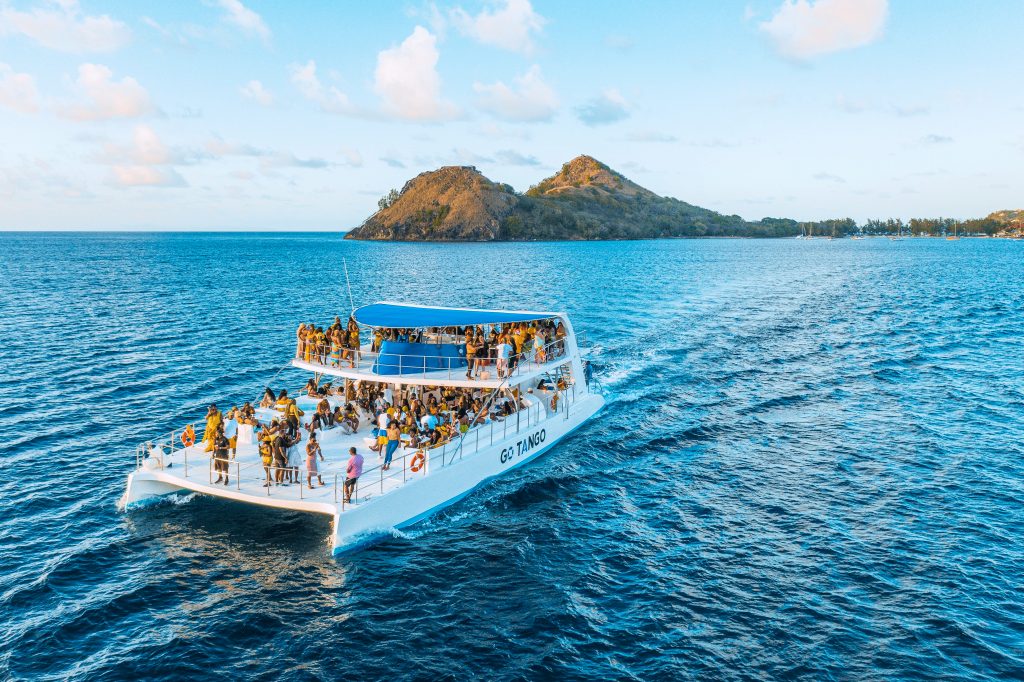
Shared Feature- LiFePO4 Batteries
It’s time to switch to our LiFePO4 battery from your lead-acid one.
The chemistry of both E-Series battery packs (10240 Wh / 96 V) and G102-100 battery packs (2 kWh – 9 kWh/ 48 V) is LiFePO4, which is 30% lighter but offers about 50% more usable capacity than AGM lead-acid batteries. In addition, AGM batteries can only endure for 300–500 cycles, whereas LiFePO4 batteries can last up to 3000 cycles.
The greatest significant benefit is that LiFePO4 is much safer than most other types of lithium in that it won’t catch fire when the cells are damaged.
Recent Posts

ePropulsion Launches New Business Unit – ePropulsion Commercial

Outboard Motor Battery: What Size Do I Need & What’s Best for My Boat?

ePropulsion Partners with 37th America’s Cup to Supply Sustainable Electric Power for Autonomous Race Marks
Join the discussion cancel reply.
Save my name, email, and website in this browser for the next time I comment.
Notify me via e-mail if anyone answers my comment.
This site uses cookies to personalize your experience and analyze site traffic. By clicking accept or continuing browsing the site, you are agreeing to our use of cookies. See our Privacy Policy here .
View the Serial Number
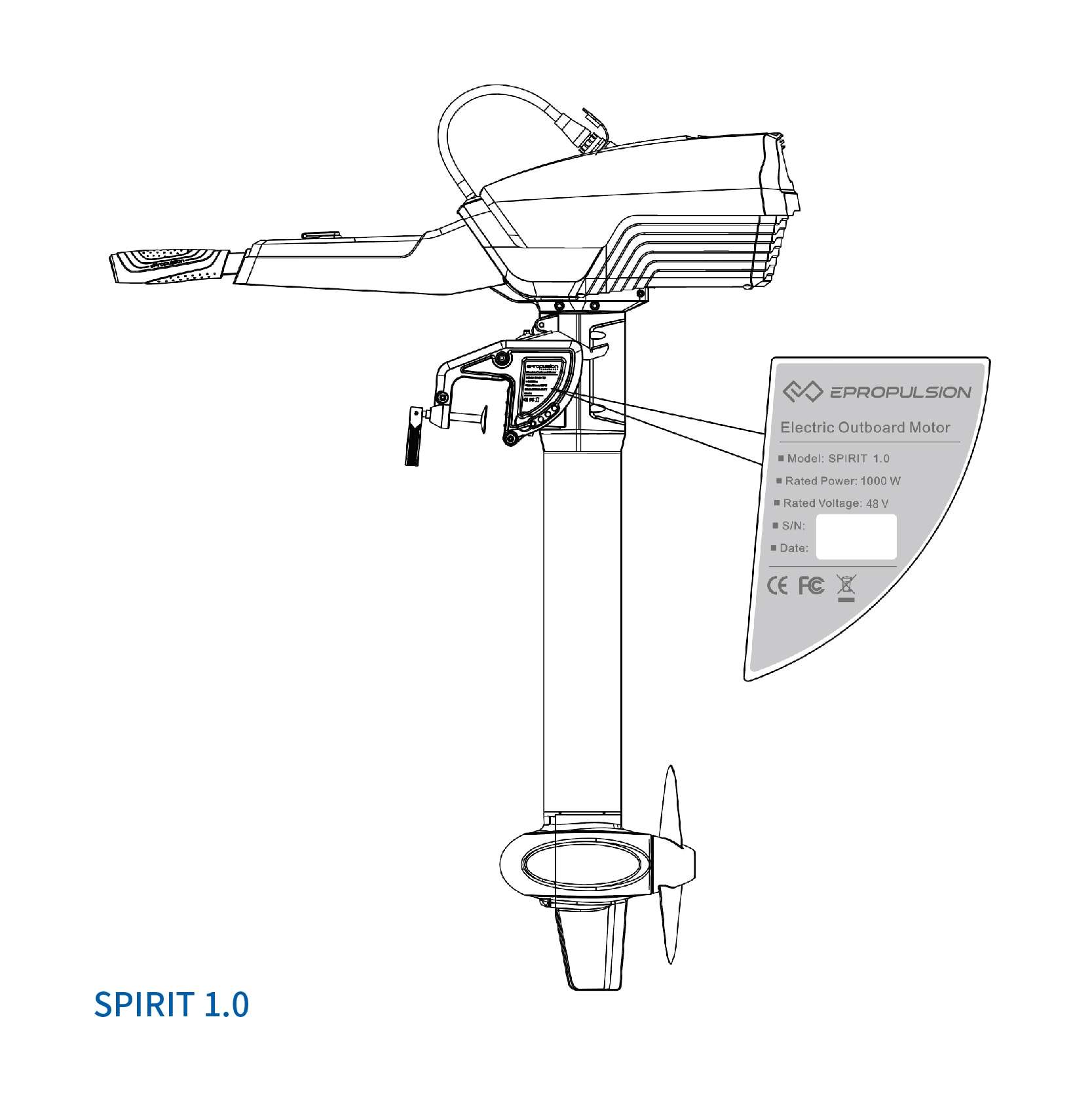

HYBRID AND ELECTRIC MARINE POWER AND PROPULSION SYSTEMS

Zero Emission
No environmental restrictions

No high voltage risk
Remote System Interface
State of the art Lithium Ion battery technology
Safe installation and operation
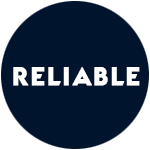
Instant power output for maneuverability
Zero to full torque in an instant
No waiting for engine rev to settle
No pre-start warning beep
Best quality components available

Patented Technology
Hydro power regeneration
Superior thrust efficiency and energy capture
Remote diagnostics
Low maintenance
System Solutions for a Range of Marine Activity
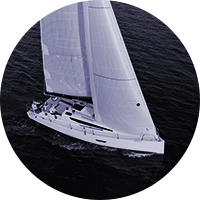
THE FACTS ABOUT ELECTRIC POWER, BATTERIES AND PROPULSION
Today's electric motor technology has already moved from
the open road to the open ocean.
Instant High Torque
Electric motors are in constant ‘stand by’ mode; you can engage the control lever at any time for instant forward or reverse propulsion.
Electric motors achieve instant torque with Electromotive Force while internal combustion engines need to build RPMs gradually by increasing piston firing frequency.
Hydro Generation
At sailing speeds over 6 knots Oceanvolt systems are able to generate significant power for recharging the battery bank by activating at the touch of a button.
Power regeneration increases exponentially with each additional knot of speed.
Lithium Ion batteries are superior to other battery storage technology; highest storage capacity, high effective current delivery, high charge capacity resiliency and wide temperature range performance. In today's digital age, where everything is just a click away, 1xbet mobile takes a significant chunk of the online casino services sector. Starting as an online casino service in 2007, 1xBet expanded its services in 2014 to include sports betting. Fast forward to 2018, and they marked their entry into the Indian market. Their app and website, designed in a calming blue and white hue, are not just a treat for the eyes but are also super intuitive. With a support interface that covers 50 languages, including Hindi, the platform ensures that language is no barrier to placing your bet.
Oceanvolt highly skilled technical team ensures proper installation and system-optimization. Only the highest quality Li-Ion batteries are used - to ensure performance and safety.
For those interested in a hybrid solution, generators are a highly efficient way to extend range while at sea.
DC generators have the advantage of rapid recharging capability.
AC generators are, generally, smaller and even portable which means that the generator can be aboard only in situations where longer motoring might be required.
Battery recharging is accomplished with shore connection, hydro generation (an integrated part of all Oceanvolt systems) and/or solar panels.
In Hybrid solutions , a generator (either AC or DC) can be used to recharge batteries / extend motoring range.
Integrated components
It is essential that all system components are properly selected and installed.
Our team of highly skilled technicians ensure that all components are compatible and that system management software is optimized.
Oceanvolt blog
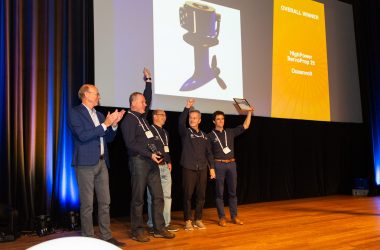
Oceanvolt’s upcoming boat show appearances
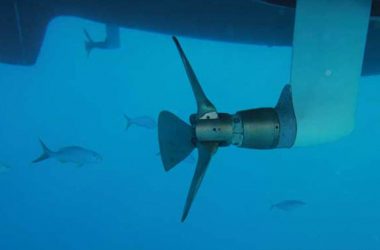
WHITEPAPER: HYDROGENERATION

WHITEPAPER: HORSEPOWER VS KILOWATT
Owner testimonials.
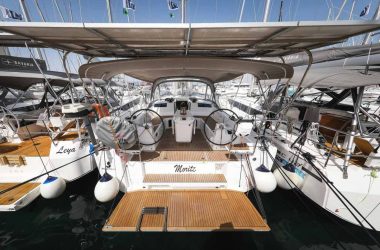
Electric Beneteau Oceanis 40.1 “Moritz”
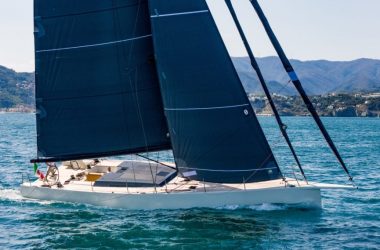
Maxi Dolphin MD55
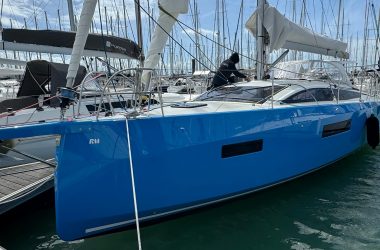
RM Yachts RM 1180

Flexible, future-proof choice
Electric marine propulsion – future-proof and flexible
Electric marine propulsion is your flexible, future-proof choice. Flexibility is a must for your propulsion system because so many things in shipping are uncertain. Flexibility safeguards you from the uncertainty about the availability and cost of sustainable fuels, for example. If you are not sure about the additional power sources that will support your combustion engines, you will need flexibility. And you need it also if you do not know exactly which operational profiles will be sailed.
The classical diesel-electric propulsion systems are so flexible because of their one major advantage. The power generating units (gensets) are only electrically connected to the electric propulsion system. This makes it easier to replace the units with a new power source – such as a future-fuel operated engine, a battery, or a fuel cell.
The following is an example configuration of a diesel-electric propulsion system on a vessel:
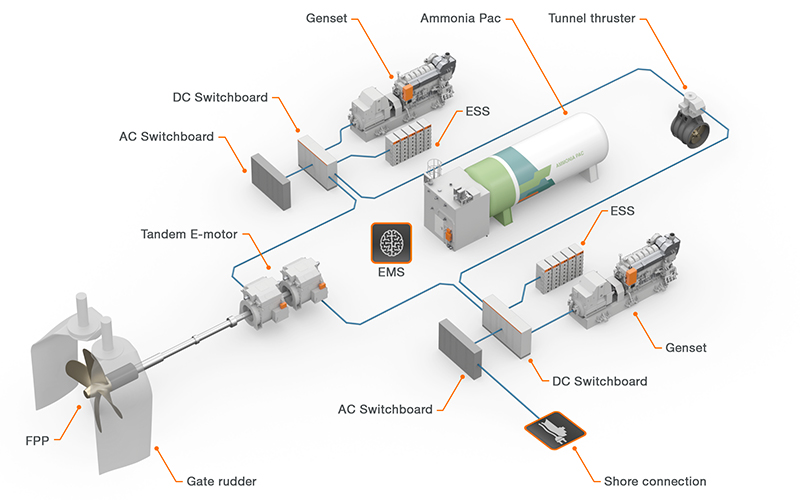
Diesel-electric propulsion systems continue to be a solid choice for ships that
- have a significant hotel load, such as cruise ships
- need to move with varying speeds, such as offshore and special vessels.
The current decarbonisation requirements mean that many more types of vessels are considering to adopt electric propulsion.
Wärtsilä has delivered electric propulsion systems to more than 350 vessels – to tugs, offshore vessels, research and special vessels, and to large cruise ships.
Benefits from electric marine propulsion systems
Lower emissions.
The electrical propulsion system is and environment-friendly choice – even with diesel generators. This is because the electrical propulsion system makes it possible to operate the generators within their optimal operational range even when the load from propulsion varies. Therefore, adopting electrical propulsion for a ship will significantly reduce the emissions of NOx/NO, CO, CO2, and soot.
At lower propeller speeds, the number of generators that are online can be adjusted according to the power demand. The engines will run more efficiently, which saves fuel.
Low noise and vibration
Electric propulsion drives are unsurpassed for their quietness of operation.
More reliable
The propulsion system on the ship can be configured for better redundancy. This makes the system more reliable.
Responds to operational needs
The torque-speed of the motor makes it possible to high-over torque at propeller standstill. The propeller can be driven at all speeds and torques within design limits – there are no other limitations.
Smoother manoeuvring and positioning
The electric propulsion system has excellent dynamic characteristics. Changes in propeller speed and propeller reversals during manoeuvring and positioning can be carried out at optimum acceleration rates.
Outstanding mains quality
The electric propulsion system generates only minimal harmonics or voltage drops, which means that the interference to mains is also minimal.
Easier to operate
A ship navigation and command system can control the electric propulsion drives automatically, and manually from any control console. The functions and operating states are monitored, which will prevent operating mistakes and overloads.
Leaner installation and OPEX savings
Choosing an electric propulsion system for a ship instead of a diesel mechanical one means that there are fewer diesel motors and cylinders. The system also allows the motors to operate at constant speed, which reduces wear and tear. The result: lower costs of maintenance and less frequent demand for spare parts, which saves money.
Are there any disadvantages?
Marine electric propulsion does have one drawback when compared to mechanical propulsion: electric losses. However, the losses are usually smaller than people think, and this article explains why the high losses are a myth .
Even so, electric propulsion is a superior choice because it is so flexible. After all, you can change the type of the propulsion power source, and the rest of the propulsion system can remain as it is.
Converter topologies
There are three basic topologies for an electric marine propulsion system: AC system, DC system, and Wärtsilä’s patented Low Loss Solution. Wärtsilä will consider your vessel’s needs and propose the optimal topology, which may be a smart combination of the basic topologies.
Alternating Current (AC) systems are the most common diesel-electric propulsion solution, in Low Voltage (440 / 690V) or Medium Voltage (6.6 / 11 kV) settings. AC systems combine a switchboard with transformers and AFE (Active Front End) or DFE (Diode Front End) converters for each propulsor.
The Direct Current (DC) system is gaining popularity. A DC system is always in Low Voltage (1000V) setting. It has the advantage that it can connect variable speed gensets and batteries (which are always DC).
A DC Hub is a combined DC switchboard with converter modules. It is not always smaller or more light weight than the AC equivalent. It is important to weigh the possible advantages of a DC system, especially for a hybrid propulsion system.
Learn more from the article “DC or not DC, that is the question” .
Low Loss Solution
The patented Low Loss Solution from Wärtsilä reduces the number of transformers needed and reduces the electric losses. At the same time, it increases the redundancy of the propulsion system.
With its 200+ installations, the Low Loss Solution is the market standard for DP (Dynamic Positioning) / offshore vessels.
Electric propulsion for merchant vessels
An electric propulsion system is the ideal choice for owners who feel uncertain about the future of propulsion solutions. The benefits become even more attractive when the vessel will be operating at varying speeds and have a high hotel load. Merchant vessels such as feeders, RoRos, short-sea PCTCs (pure car and truck carriers), and small tankers will gain significant benefits from an electric propulsion system.
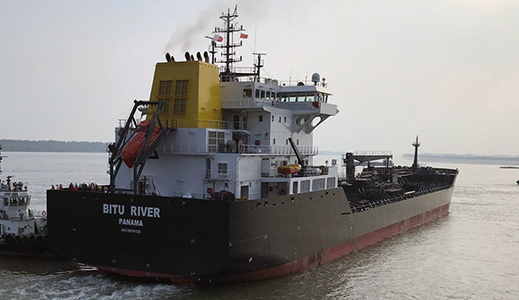
Electric propulsion for cruise ships and ferries
Most modern cruise liners and ferries are designed with diesel-electric propulsion systems. These offer numerous advantages in terms of low noise and vibration-free operation, maximized cabin related loading capacity, more economic operation - especially the improved efficiency in partial propulsion power mode, a high degree of reliability, availability and redundancy, lower emission levels, and reduced wear and tear.
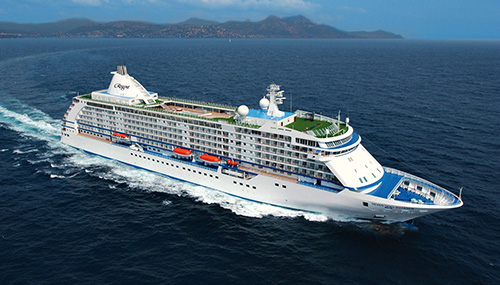
Electric propulsion for large LNG carriers
Electric propulsion can make it possible for LNG carriers to enter a new era of decarbonisation – and increase their cargo capacity at the same time. The next generation hybrid electric LNG carrier design features an impressive 185kcbm cargo capacity within the standard dimensions and displacement of a 174kcbm vessel design. The design is the result of broad industry collaboration. Its five Wärtsilä 31 Spark Gas and Dual Fuel generating sets offer best efficiency and lowest emissions in this segment.
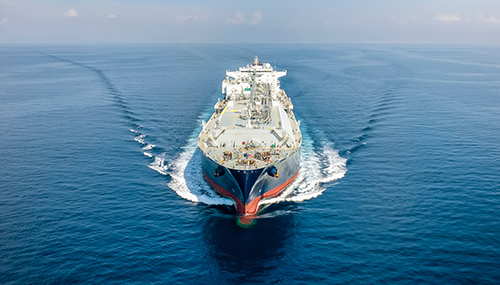
Electric propulsion for offshore vessels
Offshore vessels, pipe and cable laying vessels, and heavy lift jack-up vessels have a long operations time at zero or slow speed and they are often required to change their speed rapidly. Therefore, they need a propulsion system with excellent dynamic characteristics to support their manoeuvring and positioning moves and reversals.
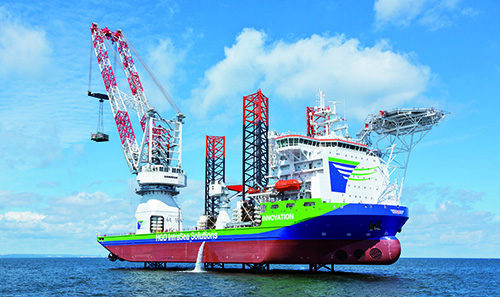
Electric propulsion for special vessels
The ideal propulsion system for special vessels is based on speed-controlled DC or AC motors which drive the propeller either directly or via gears. Research and survey ships and fishery supervision vessels often choose the direct drive option because it is the most reliable and low noise design. Multi-purpose vessels and icebreakers require propulsion systems with excellent dynamics to permit the flexible use of the torque speed characteristic, up to high-over torques and propeller standstill.
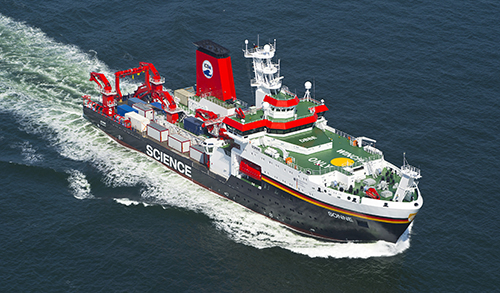
Electric propulsion in ships - examples
Discover the benefits others have already gained. Marine electric propulsion systems in offshore vessels, cruise ships, tankers, ferries, research vessels, tugs, yachts.
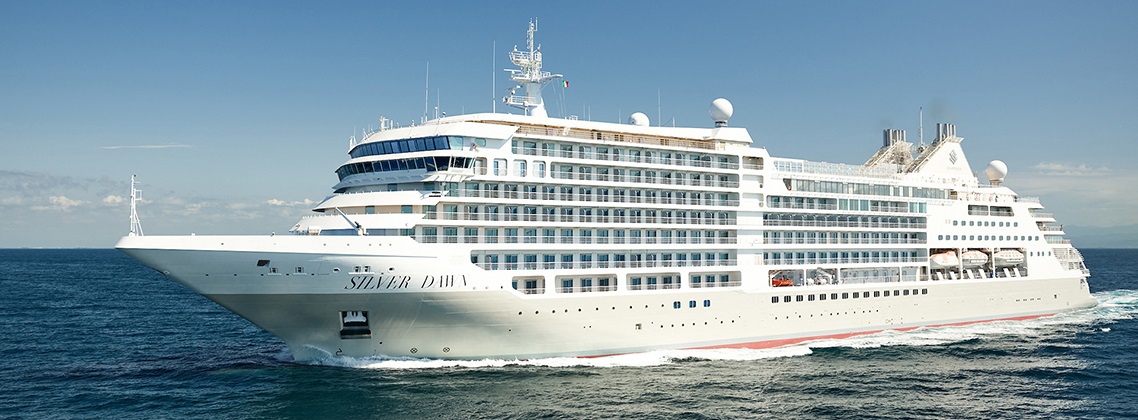
When Silversea’s luxury cruise liner Silver Dawn needed a high-quality, reliable and quiet propulsion system, Fincantieri shipyard turned to Wärtsilä.
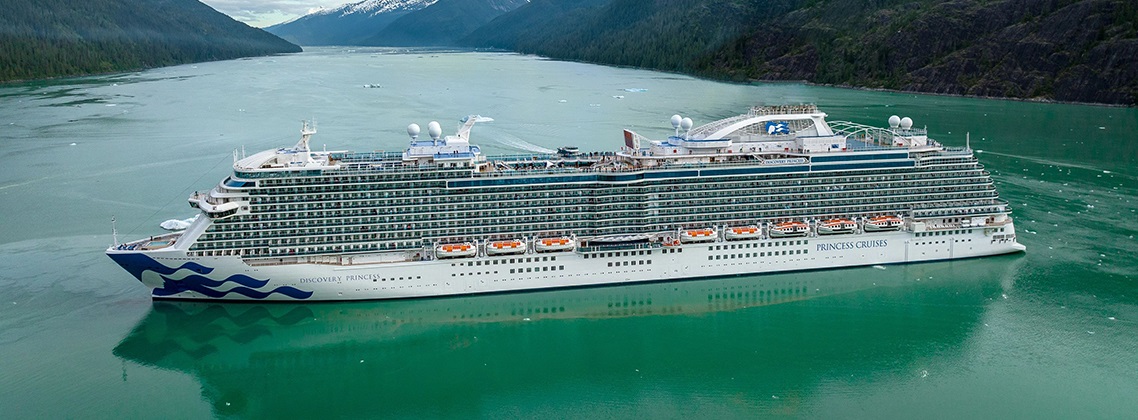
Princess Cruises relies on Wärtsilä’s propulsion system for minimal engine noise and vibrations and ultra-reliable operation on its vessel Discovery Princess.
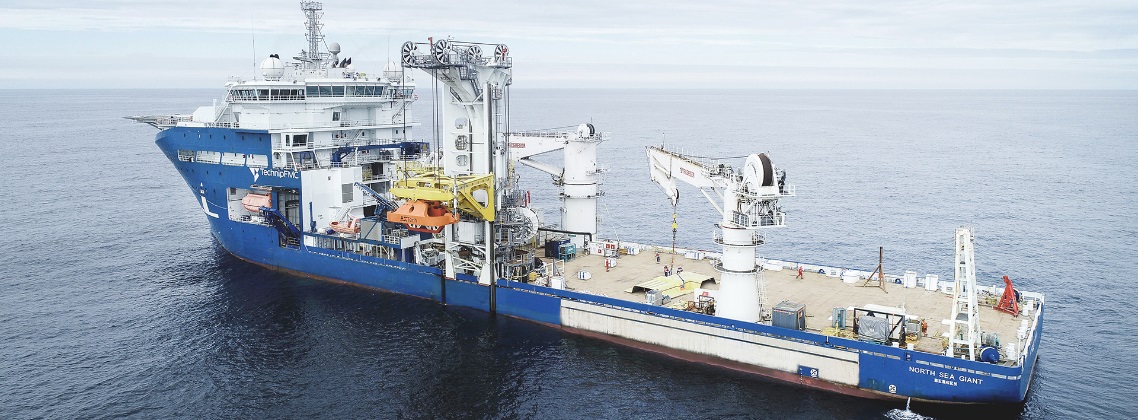
Wärtsilä Hybrid upgrade brings significant fuel savings for offshore vessel
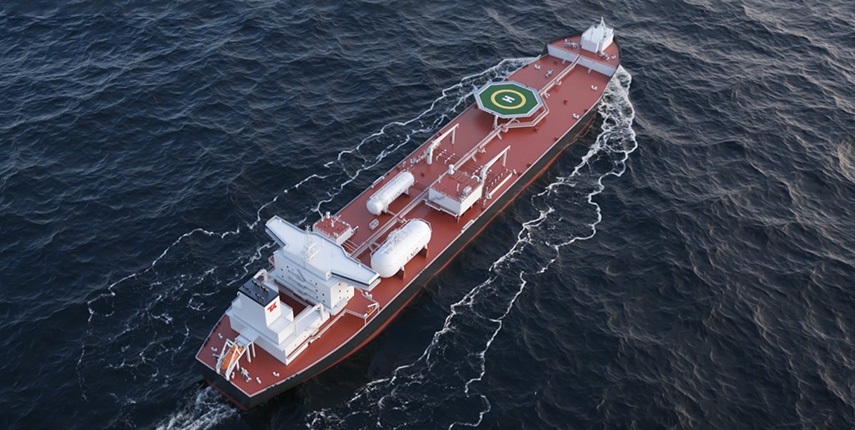
A broad range of solutions for a new tanker class that reduces not only the environmental impact from the vessel itself but from the cargo too.
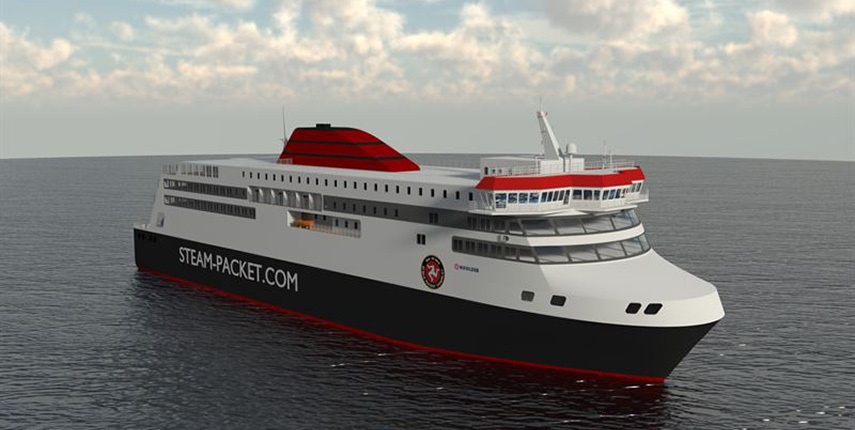
Wärtsilä has worked closely with the owner to develop a customised integrated solution based on the ship’s operating profile and customer-specific requirements. Reliability, efficiency, and low operating costs were key considerations.
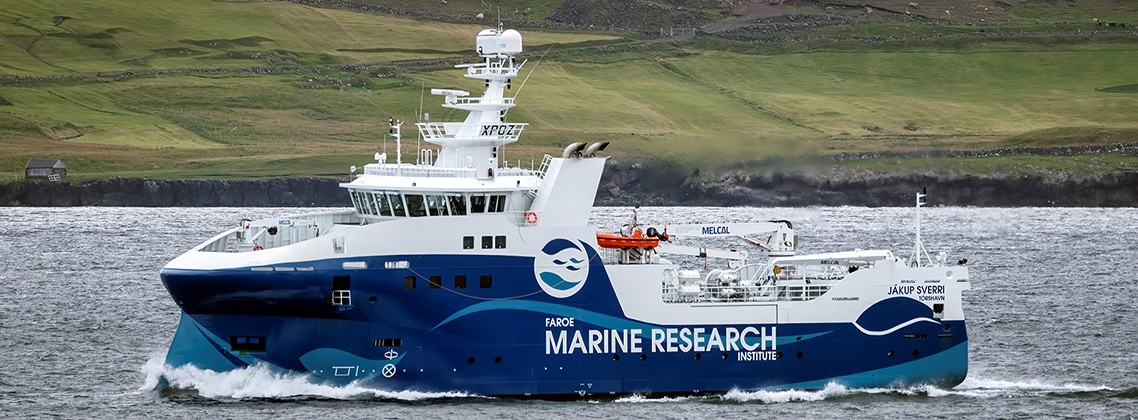
Wärtsilä provides ultra-silent propulsion technology for Faroese research vessel Jákup Sverri
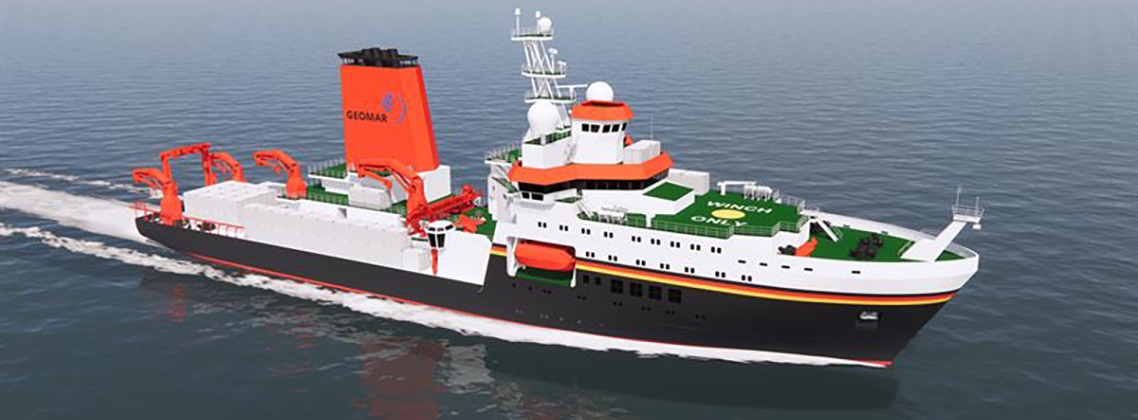
Wärtsilä will provide and integrate the electrical system package for a new German research vessel Meteor IV
Related solutions

Interesting insights
Discover these hand-picked articles to learn more about electric propulsion for ships.
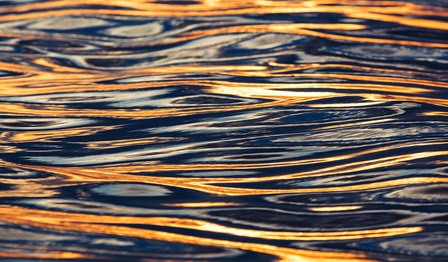
Hand-picked press releases
Wärtsilä electrification solutions to support CSL with emission reduction targets
Wärtsilä propulsion solutions selected for Brazilian Navy’s Polar Vessel
Wärtsilä propulsion solution selected for sustainable new hybrid tug
- Privacy notice
- Cookie notice
- Terms of Use
Yachting Monthly
- Digital edition

Electric yacht: What are the options for going electric?
- Will Bruton
- July 17, 2020
The options for having an electric yacht or a hybrid-electric yacht are growing in popularity; we outline the current options for those making the switch

The Arcona 380Z is a standard production yacht that has been adapted for electric propulsion. Note the increased solar panel surface area with soft panels bonded to the sails. Credit: Jukka Pakainen
A modern electric yacht can come in all shapes and sizes, from the latest high-tech speed boats with recently developed high-performance electric engines, to a traditional tender with an electric outboard on the back. Increasingly yachts are going electric too as electric engines become increasingly capable of propelling boats weighing several tonnes, and with the rigging for sails, at a reasonable speed for an acceptable length of time.
Since the invention of the marinised engine , there has never been the capacity to store enough fuel to cover significant distances in boats that are smaller than a tanker, with fuel capacity always being the limiting factor. As such the best way to cover long distances on a boat fit for a small number of passengers was, and remains, wind power.
For all the many green attributes that using the power of wind offers, there is no escaping that for most, fossil fuels still represent some part of sailing – whether that be a diesel engine to motor in light winds, onto and off a mooring , or to generate power for onboard electronic systems. Even a small tender used to go from ship-to-shore is often fitted with an outboard motor.
Recent advances in electric power, however, have started to make electric propulsion a reasonable alternative to fossil fuel power. Range will always be an issue but that has long been true of a traditional diesel engine. Improvements in lithuim-ion battery performance is, and likely will continue to, increase range every year.
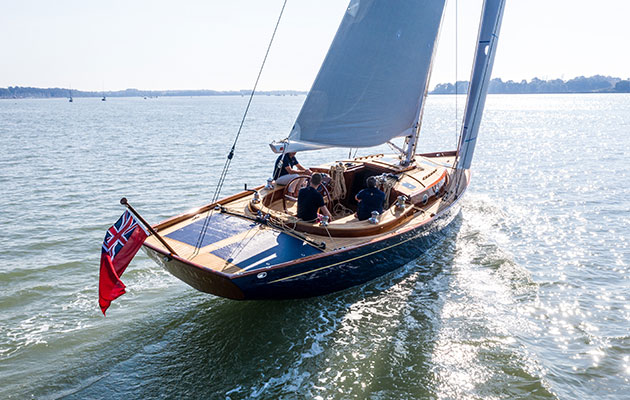
Spirit Yachts 44e – the ‘e’ stands for electric
Additionally electric power and batteries offer the bonus of being able to be recharged via solar panels , a wind turbine or hydroelectric power – via a hydrogenerator mounted on the stern of a boat sailing.
At first glance the electric yacht market could appear in its infancy, but like every revolution, the will of the people is driving forward technology that only a few years ago was seen as the stuff of fantasy.
The market has responded to demand, and battery and motor technology has come on leaps and bounds, driven in part by the rapid development of electric cars.
It may not be commonplace yet, but electric yachting is here, even available ‘off the shelf’, so is it time to get onboard?

The Spirit 111 is a bold hybrid yacht, promising 30 miles motoring under electric power alone. Credit: Ian Roman/Waterline Media
A cutting edge electric yacht
Like Formula One, it’s the cutting edge of electric yachting that trickles down into mainstream production in no time at all.
For Spirit Yachts, a builder defined by a unique blend of traditional and state-of-the-art, electric yachting has been driven by demanding clients that want their yachts to be at the cutting edge.
Spirit Yachts have now produced a number of projects aimed at the all electric luxury yacht market including the Spirit 44e electric yacht and a recent project, the Spirit 111, had all the hallmarks of a superyacht project and the team had to earn their keep delivering to brief.
Managing Director Nigel Stuart explained how it works.
‘The 111 combines several cutting-edge technologies to deliver a something that’s never really been done before. A lithium-ion powered electric drive system can be charged by hydrogenation and also two high-wattage diesel generators.
‘Each generator is 22kw, meaning they can pack a lot of power into the system in a short period of time, they don’t need to run for long to fully recharge.
‘The prop is both a means of drive and power generation, so no separate hydrogenerator is needed. She will be capable of motoring under electric alone for more than 30 miles.
‘When you take on a project that’s electric, it makes you think hard about efficiency so the air conditioning, water heaters and everything in the galley has also been carefully selected to use less power.
‘For her owner there is very little compromise and some major advantages.’
Whilst it’s a long way from the average cruising yacht, the trickle-down effect of projects like the Spirit 111 can’t be underestimated.

Calypso , a Contessa 32, was the yard’s first foray into electric-powered yachts. Credit: Jeremy Rogers
Traditional electric yacht
Jeremy Rogers’ yard in Lymington is the birthplace of the iconic Contessa designs and a veritable temple to long keeled , traditional craft.
Less well known is the yard’s interest in electric auxiliary engines, something they have been involved in for more than 10 years.
Their first project, the refit of a Contessa 32 called Calypso, was an experiment by the Rogers family to see what was possible.
‘ Calypso was a test bed in the technology’s infancy,’ explains Kit Rogers of this early electric boat.
‘Inevitably, we didn’t get it all right, but we learned a lot about the dos and don’ts of electric yachting. The end result was a hybrid. The more we did, the more interesting the project became.
‘It’s not just the obvious, silent peaceful propulsion; it’s also the things you take for granted about a cruising boat. For example, no gas, we didn’t need it because we had electric power.
The yard has also worked on an electric folkboat conversion for a foreign customer.
‘The client, first and foremost, loves to sail. He sees the electric as an auxiliary option, along with the rowing and is excited to own a boat that’s quietly different.
‘He’s looking for a more connected experience and an electric boat helps him achieve it. When you’ve been motoring in and out of marinas under chugging diesel engines for years, the electric motor is something of a revelation.

Arcona has installed solar sails on its latest 380Z electric yacht
Off-the-shelf electric yacht
Perhaps the biggest indication of the future of the electric boat is the willingness of production and semi-production builders to pin their flags to the mast and embrace it.
One of the first was Hanse, who developed a version of their 315 utilising a Torquedo electric pod system.
Providing around the same amount of power as a 10 horsepower diesel, a 4.4kWh lithium ion battery pack powers the system.
Arcona, Dufour, Elan and Delphia also have electric boat models and are each taking their own direction on entering the market.
Arcona’s 380Z (the ‘Z’ stands for ‘zero emission’) fully electric boat has solar panel covered sails, capitalising on the large surface area to top up batteries under sail.
In the multihull market, there is even more scope for solar, wind and hydrogenation due to the horizontal surface area available for solar charging.
What are the options for an electric yacht?
Pure electric.
Purely electric systems can be broadly divided into two categories, high and low voltage.
The latter is the simplest option in terms of how it works and requires less specialist knowledge to install.
Kit Rogers installed a 48v Ocean Volt system in his latest project and remarked on the experience.
‘The advantage of the low voltage system is its inherent lack of complexity. Whilst we’ve coupled it with lithium ion battery technology, it can also be wired up to conventional lead acid batteries. There are pros and cons to both. What surprises everyone is the size, it’s a tiny motor and is surrounded by lots of space where the engine would normally sit.’
High voltage systems are more advanced, and utilising lithium-ion technology, their capacity is improving year on year.
For larger yachts this is generally seen as a better option.
A partnership between BMW and Torqueedo has led to the development of the Deep Blue 315v high voltage battery.
Effectively the same unit as found in the BMWi3 electric cars now often seen on the high street, the system produces a lot of power and is being used on the Spirit 111 project as well as catamarans.
Electric hybrid
One big barrier to entry exists for most potential electric yacht buyers – range.
Even the most advanced set-ups are limited to a maximum of a few hours motoring at cruising speed.
‘The electric motors excel at two things in particular,’ explained Kit Rogers.
‘The first is as auxiliary power for getting in and out of marinas. The second is engaged at low power to very efficiently motor-sail in light airs. If you want to do more than that, at present, you need to add a way of packing in the charge into the battery quickly whilst at sea; which means a generator’ .
As with electric cars and as enthusiasm builds for the technology, a hybrid option, pairing a generator with an electric drive system, is already proving popular and is probably the most practical option for those planning to cruise any distance.
Using a large generator, charge can be quickly put into the system when needed.
Once under sail, the yacht’s propeller becomes a hydro generator, meaning that diesel power is not needed day-to-day.
Solar can also be used to add additional charging capacity.
‘When a fully integrated electric hybrid system is incorporated into a cruising yacht from the outset, its possibilities really become clear,’ explains John Arnold, UK manager at Torqeedo.
‘Sailing for days on end with no engine noise is entirely possible. There are other less obvious benefits too. Electric drives have no long rotating shaft, so can be used as pod drives as well, meaning the boat is far more manoeuvrable than even a yacht equipped with bow and stern thrusters.’

Spirit Yachts 44e
How much does it cost to convert a yacht to electric power?
The technology exists, but anyone seriously considering going electric will want to crunch the numbers.
In the case of taking out a traditional inboard diesel and replacing it with an electric system, it’s relatively easy to work this out.
However, unless you include an auxiliary generator, you will be limited to battery range alone.
For this reason, we’ve done a like for like comparison for a 35ft yacht engine refit, including the cost of a generator to make the system a practical hybrid.
Unsurprisingly, at the moment, there’s a big difference in cost, but at between three to six times the cost, it is gradually coming into the realms of possibility, and prices should continue to drop as technology develops and evolves.
Ocean Volt SD10 Motor system (including batteries, charger and 6kw generator): £30,825.16
Beta Marine Beta 20hp Marine Diesel: £4,100
If you enjoyed reading this….
A subscription to Yachting Monthly magazine costs around 40% less than the cover price .
Print and digital editions are available through Magazines Direct – where you can also find the latest deals .
YM is packed with information to help you get the most from your time on the water.
- Take your seamanship to the next level with tips, advice and skills from our experts
- Impartial in-depth reviews of the latest yachts and equipment
- Cruising guides to help you reach those dream destinations
Follow us on Facebook , Twitter and Instagram.
The driving force behind safe, efficient and sustainable operations
Azipod® electric propulsion

Do you have questions?
Please leave them here and we will get in touch with you shortly.
Azipod® propulsion portfolio
News and highlights
.jpg?Culture=en&sfvrsn=4437110c_1&CropWidth=500&CropHeight=250&Quality=High&CropX=0&CropY=22&Width=390&Height=195&Method=CropToFixedAreaCropToFixedAreaArguments&Key=062e37ad0f159c09983a5e09a08d421b)
ABB’s integrated power and propulsion system for NKT sets new standards for cable layer performance
Integrated ABB Onboard DC Grid™ power distribution and Azipod® propulsion will optimize the performance of NKT’s new cable layer NKT Eleonora

ABB Spearheads Future-Proof Technologies for Icebreaking Ships
Operating safely and responsibly in the toughest ice conditions on the planet requires the toughest technology. Harsh environments, regulatory requirements, and lack of infrastructure are key challenges in building icebreaking vessels for operations in Polar waters – not only research vessels, but also expedition ships, cargo ships, tankers, and LNG carriers. System redundancy and equipment reliability are critical for the safety of both vessel and crew. Podded propulsion solutions have been developed to meet these stringent requirements offering effective, clean, and quiet operations together with superior maneuverability and reliability.

ABB introduces CO2e Calculator for enhanced transparency on emissions in vessel operations
The CO2e Calculator allows shipowners to estimate the reductions in carbon dioxide-equivalent emissions enabled by ABB solutions

ABB and Carnival Corporation sign strategic partnership for Azipod® propulsion services
Long-term partnership agreement covers service for vessels powered by Azipod® XO electric propulsion system

ABB to supply ice-classed Azipod® propulsion for new polar research vessel
ABB has won an order to deliver compact Azipod® DI propulsion system to the new polar research icebreaker of Chinese Institute of Deep-sea Science and Engineering

Aeolus collaboration offers a compelling path to future-proof yachting
Designed to stand the test of changing attitudes to the environment and lifestyle at sea, the unique superyacht concept Aeolus is a multidisciplinary collaboration with power and propulsion technology from ABB at its core.

Azipod® propulsion ticks all the boxes in the growing retrofit market
ABB’s market leading Azipod® electric propulsion system has become a commercially attractive retrofit option for existing vessels as shipowners seek ways to comply with new emissions regulations.

ABB to power two new multi-purpose patrol vessels for Finnish Border Guard
ABB will supply an integrated power and propulsion package comprising dual Azipod® propulsors and the Onboard DC Grid™ power system for two newbuild Finnish Border Guard patrol vessels

ABB’s mid-range Azipod® propulsion to power four cruise vessels built by Fincantieri
Four newbuild vessels will each feature a pair of 7.7 MW Azipod® propulsion units for high efficiency, maneuverability and passenger comfort

ABB and Incat sign LOI to develop lightweight hybrid-electric ferry
In a groundbreaking collaboration between the two companies, the announcement paves the way for ABB to supply zero-emission power and propulsion solutions and evaluate a future commercial arrangement for the 148-meter long ferry and similar vessels.

Recent development of icebreaking ship propulsion
Icebreakers have been sailing for some 120 years. At first only slightly more powerful than ordinary commercial vessels, in the early years icebreaker propulsion systems consisted of steam engines connected to a propeller. Marine diesel engines later began to replace steam engines in tandem with advances in electric equipment technology.

ABB to power two new Ritz-Carlton Yacht Collection vessels with Azipod® electric propulsion
ABB to supply complete propulsion packages for two Ritz-Carlton mega-yachts, further strengthening the collaboration that began in 2017 with the hotel group’s entry into the maritime market.

Making sea traffic more sustainable: ABB technology to power new hybrid-electric ferries
ABB will supply complete power, automation and propulsion solutions for three hybrid-electric passenger and car ferries to operate in the Baltic Sea.

ABB and PONANT enter 10-year MarineCare service agreement for increased vessel safety and uptime
Le Commandant Charcot, which recently became the first exploration cruise ship to reach the geographic North Pole, has signed up for ABB MarineCare services to ensure safe and sustainable operations.

ABB’s Azipod® propulsion factory in Shanghai marks 10-year anniversary
Over the course of a decade, ABB’s Azipod® propulsion factory in Shanghai, China, has successfully delivered 170 units with a total output of 500 MW.

CO2e calculator for Azipod® propulsion
The proof is in the numbers
Azipod ® propulsion
This calculator showcases the estimated reduction of CO 2 e emissions as a result of powering a vessel with Azipod ® propulsion compared to a similar vessel powered by shaft line propellers and is based on typical scenarios calculated for cruises, yachts, ferries, and offshore vessels. This calculator could also be applicable for other vessels with a similar operational profile.
X estimated reduction in tons of CO 2 e emissions per year X tons of CO 2 e emitted from system per year

Azipod ® electric propulsion
Azipod ® propulsion is a gearless steerable propulsion system where the electric drive motor is housed within a pod outside the ship hull.
Do you have questions or would you like to discuss the results with us?
Would you like a copy of the results sent to your email?
Disclaimer:
The calculator only provides an estimate and is provided for illustrative purposes only. The calculator does not necessarily reflect all potential variables related to vessel specifications and operations which could impact the actual numbers in practice. Calculations are provided on an "as is" basis and ABB makes no representation, guarantee or warranty, expressed or implied, as to the accuracy, correctness or completeness of the calculations and shall not be liable for any errors or omissions (including but not limited to errors or omissions made by third parties) in such information including but not limited to results displayed upon usage of the Vessel CO 2 e Calculator and any other information or content on this website.
The estimates provided are not legally binding and ABB is not liable for any losses or damages arising from any use of this calculator and/or reliance on the calculations provided, including but not limited to any direct, indirect, incidental, exemplary, punitive, special or consequential damages, howsoever arising.
Energy storage
This calculator showcases the estimated reduction of CO 2 e emissions as a result of a vessel fully powered with batteries, charged from the shore energy grid, compared to the same vessel powered by a typical combustion engine using VLSFO, MGO or LNG as fuel.

ABB’s Energy storage system is a modular battery power supply developed for marine use.
The emission factors for the energy grid of each country, used in the calculations, are based on the 2022 values provided by International Energy Agency.
Onboard DC Grid ™
This calculator showcases the estimated reduction of CO 2 e emissions as a result of applying the variable speed function on Onboard DC Grid ™ for internal combustion engines, compared to a fixed speed function.

Onboard DC Grid ™ is a modular power system platform that enables simple, flexible and functional integration of energy sources and loads.
Shaft generator
This calculator showcases the estimated reduction in CO 2 e emissions as a result of installing a shaft generator on the main engine shaft compared to auxiliary generators driven by the auxiliary engines.
Auxiliary Engine
Main Engine

Variable speed shaft generator (PTO/PTI)
Using energy efficient main engine to generate electrical power (PTO), the system can boost the main propulsion shaft (PTI), and also provide Power take home (PTH) for an extra layer of redundancy.
Shore connection
This calculator showcases the estimated reduction of CO 2 e emissions as a result of supplying electric power from a shore connection, which pulls power from the utility grid, compared to generating electric power from the generators onboard.

ABB delivers shore connection and charging solutions for different vessel types enabling fully electric operations.
Contact an ABB expert
Email me the results, key benefits of azipod® propulsion.
| Some of the key reasons why the Azipod® propulsion can save up to 20% of the fuel compared to a shaft line system are: To read more about the proved fuel savings that can be enabled by the Azipod® propulsion, . Azipod® propulsion is built to achieve optimal reliability (0.996 availability) and can be delivered with various levels of redundancy, for example double winding, redundant drives and redundant steering system. Safe and flexible operations are enabled by the maneuverability of Azipod® units. The simplicity of the Azipod® propulsion supports limited down time and need for maintenance. Furthermore, the high efficiency of a Azipod® system will support reduced fuel cost and thereby reduce emissions. The tactical diameter is reduced by 40% due to the thrust characteristics of the Azipod® unit. Azipod® propulsion’s steering capability is maintained through the whole speed range of the vessel. Fast acting, the Azipod® system provides easier collision avoidance maneuvers. Crash stop can be reduced by up to 50% by rotation the pods while maintaining positive RPM in a fast and efficient maneuver. As the Azipod® system is a fully electrical propulsion, it is compatible with several types of energy sources of low voltage or medium voltage integration. Gearless system limits mechanical losses. |
| Azipod® propulsion reduces engine noise and vibration due to several factors. Fewer components result in a simpler interface and can reduce the installation costs by up to 20%. The Azipod® system design means less space is required for auxiliary equipment and less height is required in the thruster room. There is no long shaftline. All of this frees up space for the power plant, including engines and generators, which again can enable more payload. Furthermore, by deploying Azipod® propulsion, it becomes easier to develop an optimal general arrangement. The flexible design makes it possible to optimize the hull form. A complete thruster exchange can be done in 48 hours. The Azipod® system is designed so that the inboard parts be can installed early and the propulsor later, which gives flexibility and may reduce upfront investment costs for the shipyard. |

Azipod® propulsors for highest ice classes

Proven technology & reliable partner
Proven propulsion technology securing successful icebreaking operation through decades of experience

Technical reliability

Icebreaking & operational efficiency
Azipod® ICE ( 2-5 MW )

Azipod® ICE propulsion is an azimuthing propulsion solution for wide range of icebreaking vessels for power up to 5 MW. With a built-in high-efficiency LV permanent magnet motor and fixed-pitch propeller mounted directly on the motor shaft, it stands out from other thruster solutions. Azipod® ICE propulsion is extremely robust propulsion device with the simplicity, strength and reliability for the most challenging ice conditions.
| |
Azipod® VI ( 6-17 MW )

Azipod® VI propulsion is a unique azimuthing solution for ice applications, available in the power range of 6-17MW. With a built-in high-efficiency AC motor and fixed-pitch propeller mounted directly on the motor shaft, it stands out from other thruster solutions. While mechanical thrusters have complex transmission with gears and shafts, the Azipod® propulsion has only electrical cables between the power source and the thruster unit. This makes it possible to build an extremely robust propulsion device with the simplicity, strength and reliability for the most challenging ice conditions, and to any ice class.

Azipod® units ( 7.6-22 MW )
Safety and reliability

Environmentally friendly and high efficiency

Responsible supplier with proven service capability
Azipod® MO ( 7.6 MW-14.5 MW )

Azipod® XO ( 14-22MW )

Azipod® XO is a propulsion solution for high-power open water applications. Azipod® XO is available up to 22 MW unit power and it is an ideal choice for vessels like ferries and cruise ships. Azipod® XO brings energy efficiency, excellent maneuverability and improved passenger comfort.
For fast vessels, a Contra Rotating Propeller concept can be applied, leveraging an Azipod® propulsion unit and shaft line propulsion by replacing the conventional rudder with an Azipod® unit where the propellers face each other.

Azipod® units ( 1-7.5 MW )
Propulsion efficiency
Product reliability
Maneuverability
Azipod® DO

Azipod® D for open water is a second-generation compact size Azipod® propulsion series covering power range from 1 MW to 7.5 MW. Azipod® D technology combines best features of the original Azipod® C series and the high-power Azipod® XO series. Azipod® D is the most efficient azimuthing propulsor in its power range and has excellent course-keeping characteristics. Based on its gearless construction and high performance, Azipod® DO provides cost-efficient, reliable and energy saving operations for cruise, ferry, offshore and special vessels. The high performance of the thruster is achieved by a unique hybrid cooling of the propulsion motor combining a direct cooling to the surrounding sea water and an active air cooling system. Azipod® D is also available with ice classes up to PC 5.
| | ||
| 2775 | 20 | |
| 3470 | 20 | |
| 4300 | 21 | |
| 4965 | 21 | |
| 5200 | 22 | |
| 6100 | 22 | |
| 7350 | 22 | |
| 7500 | 22 |
Azipod® DZ

Azipod® DZ is the newest thruster with a nozzle in the Azipod® portfolio. It is available with up to 7,5 MW power. Based on its gearless and simple construction and high thrust performance, Azipod® DZ provides a cost efficient and reliable underwater mountable solution for DP vessels and other ships that require high thrust. The high performance of the thruster is achieved by a unique hybrid cooling of the propulsion motor combining a direct cooling to the surrounding sea water and an active air cooling system.
| | | |
| 2100 | 15 | |
| 2400 | 15 | |
| 2500 | 15 | |
| 3100 | 15 | |
| 3800 | 16 | |
| 4200 | 16 | |
| 5200 | 16,5 | |
| 5500 | 16,5 | |
| 6700 | 16,5 | |
| 7500 | 16,5 |
For main dimension drawings, click the underlined Azipod® propulsion models. *Consult ABB for higher service speeds
Meet ABB Marine & Ports in person
.jpg?Culture=en&sfvrsn=60f000c_1&CropWidth=1200&CropHeight=600&Quality=High&CropX=0&CropY=10&Width=390&Height=195&Method=CropToFixedAreaCropToFixedAreaArguments&Key=afbb7beaf37c7b1c96c7271120d65a72)
ABB at SMM 2024
We look forward to finally meeting maritime friends, peers and partners again at SMM 2024, stand 329 at Hall B6. With integrated solutions for ship and shore, including the pioneering fuel cell solution and innovative propulsion system from ABB, provide greater efficiency and reliability to shipowners and prepare the industry to meet the demands of tomorrow.

Find more events and webinars
On this page you can find the full overview of all the events we are going to attend in the near future as well as on-demand webinars.
Gain more insight

Azipod® propulsion in questions and answers
What is azipod® propulsion, what vessels types are the azipod® propulsion applicable for.
Azipod® propulsion is available in power ranges from 1MW to 22MW, making it suitable for smaller crafts , yachts , ferries , cruise ships , cargo carriers and icebreakers capable of independently operating in the harshest conditions. Today, over 25 vessel type rely on the Azipod® technology. Passenger vessels benefit from the performance provided by 360-degree rotating podded propulsors, high reliability and reduced fuel consumption. Additionally, lower vibration and the flexibility of design allowed by locating propulsion motors outside, rather than inside the hull, prove compelling for passenger vessel owners.
For vessels serving the offshore and energy industries , Azipod® installation requires considerably less space inside the vessel than competing mechanical systems, yielding greater flexibility to optimize vessel design. In addition, optimized installation of thrusters working with a pulling or pushing propeller increases the hydrodynamic efficiency of the vessel and reduces noise and vibrations. Connecting the propeller directly to the propulsion motor eliminates gears and other auxiliary equipment, meaning reduced maintenance costs and less down time due to faults in these systems
Dry cargo vessel benefit from Azipod® propulsion in operations where vessel must perform reliably over an extended period at maximum efficiency, and need to be especially maneuverable in shallow waters. For advanced icebreaking tankers and other icebreaking ships , Azipod® propulsion is a true game-changer with unparalleled icegoing characteristics and efficiency.
Icegoing ships powered by Azipod® propulsion can run ahead in open water and astern in heavy ice conditions. This capability allows ships to navigate in ice-covered seas without icebreaker assistance, while keeping higher speeds and consuming less power.
What differentiates Azipod® propulsion from conventional propulsion?
Vessel segments.

Offshore vessels

Icegoing vessels

Passenger vessels

Cargo vessels

Special Purpose Vessels

Short distance shipping

Coast Guard & Navy vessels

Other offerings
Shaftline propulsion, contra-rotating propulsion (crp), abb ability™ optime - toe angle optimization for propulsion, electric steering for azipod® propulsion.

Are you curious to know more?
Please submit any questions related to Azipod® propulsion here
Submit your inquiry and we will contact you
Quickly find an ABB channel partner
- Middle East and Africa
- Asia and Oceania
- Global - English
- Austria - German
- Belgium - Dutch | French
- Bulgaria - Bulgarian
- Croatia - Croatian
- Czech Republic - Czech
- Denmark - Danish
- Estonia - Estonian
- Finland - Finnish
- France - French
- Germany - German
- Greece - Greek
- Hungary - Hungarian
- Ireland - English
- Italy - Italian
- Latvia - Latvian
- Lithuania - Lithuanian
- Luxembourg - French
- Netherlands - Dutch
- Norway - Norwegian
- Poland - Polish
- Portugal - Portuguese
- Romania - Romanian
- Russia - Russian
- Serbia - Serbian
- Slovakia - Slovakian
- Slovenia - Slovenian
- Spain - Spanish
- Sweden - Swedish
- Switzerland - French | German | Italian
- Turkiye - Turkish
- United Kingdom - English
- Argentina - Spanish
- Aruba - Spanish
- Bolivia - Spanish
- Brazil - Portuguese
- Canada - English | French
- Chile - Spanish
- Colombia - Spanish
- Costa Rica - Spanish
- Dominican Republic - Spanish
- Ecuador - Spanish
- El Salvador - Spanish
- Guatemala - Spanish
- Honduras - Spanish
- Mexico - Spanish
- Panama - Spanish
- Peru - Spanish
- Puerto Rico - Spanish
- United States of America - English
- Uruguay - Spanish
- Algeria - English | French
- Angola - English | French
- Bahrain - English | French
- Botswana - English | French
- Cameroon - English | French
- Côte d'Ivoire - English | French
- Egypt - English | French
- Ghana - English | French
- Israel - Hebrew
- Jordan - English
- Kenya - English | French
- Kuwait - English
- Lebanon - English
- Madagascar - English | French
- Mali - English | French
- Mauritius - English | French
- Morocco - English | French
- Namibia - English | French
- Nigeria - English | French
- Oman - English
- Pakistan - English
- Palestine - English
- Qatar - English
- Saudi Arabia - English
- Senegal - English | French
- South Africa - English
- Tanzania - English | French
- Tunisia - English | French
- Uganda - English | French
- United Arab Emirates - English
- Zambia - English | French
- Zimbabwe - English | French
- Australia - English
- Bangladesh - English
- China - Chinese | English
- India - English
- Indonesia - English
- Japan - Japanese
- Kazakhstan - Russian
- Malaysia - English
- Mongolia - Mongolian | English
- New Zealand - English
- Philippines - English
- Singapore - English
- South Korea - Korean
- Sri Lanka - English
- Taiwan (Chinese Taipei) - Chinese - Traditional
- Thailand - English
- Vietnam - English
abb.com privacy settings
Our website uses cookies which are necessary for running the website and for providing the services you request. We would also like to set the following optional cookies on your device. You can change these settings any time later by clicking "Change cookie settings" at the bottom of any page. For more information, please read our privacy notice.
We collect statistics to understand how many visitors we have, how our visitors interact with the site and how we can improve it. The collected data does not directly identify anyone.
We store choices you have made so that they are remembered across visits in order to provide you a more personalized experience.
Your browsing behavior is tracked across websites by advertising and social network service providers. You may see tailored advertising and content on other websites based on your browsing profile.
Preferences
Advertising and tracking
Popular links
- Marine events
- Marine press room
- Onboard DC grid™
- Customer events
- Investor events
- Media events
The Pros, Cons, and Future of Electric Yachts and Sailboats
- By Sail Greener
- Last updated: April 27, 2022

Sail Greener is supported by our readers. When you buy through links on our site, we may earn an affiliate commission.
If you sail you likely spend considerable time—and money—cleaning, fixing, and worrying about your diesel or gas engine. When it comes to safety, your backup propulsion is as important as your sails. Can you rely on electric motors for safety? What are the pros and cons of buying an electric sailboat?
Diesel engines are reliable, but they pollute. Diesel (and gas) engines emit greenhouse gasses and exhaust that includes particulate matter and carcinogens that are a risk to human health.
Until recently, alternatives to marine diesel engines were limited. Boat owners could carry out their own repower projects or purchase expensive commercial electric motors. Storage capacity was a problem.
Fortunately, the winds are shifting and there are now numerous high quality and economically competitive alternatives to traditional marine engines. In this article we describe the pros and cons of purchasing a new motor or repowering an existing engine. We also describe the market for marine electric propulsion systems and identify leading boat builders, manufacturers, and installers.
Why do we need electric sailboats?
The climate is warming and we continue to pump greenhouse gasses into the atmosphere at a torrid pace. Transport emissions, including road, rail, air and marine transportation, account for nearly a quarter of global CO 2 emissions. 1 https://www.ipcc.ch/report/ar5/wg3/transport/ According to the United Nation’s International Maritime Organization , marine traffic accounts for nearly 3% of the world's CO 2 emissions.
While emissions from recreational boaters are less than those from shipping and fishing fleets, they are still considerable. According to an estimate from electricmotoryachts.com , if just 5% of the roughly 13 million registered boats in the United States today repowered with electric, boaters would eliminate an estimated 1 billion pounds of CO 2 emissions. Scaled across boaters around the world, the potential for boaters to meaningfully reduce greenhouse gas emissions is significant.
Exposure to diesel emissions also poses health risks. The smallest particulate matter can contribute to heart attacks, strokes, and lung disease. High exposure to small particulates can impair brain development in children. The International Agency for Research on Cancer , part of the World Health Organization (WHO), classifies diesel engine exhaust as carcinogenic to humans.
Is there a market for marine electric propulsion?
Global concern over climate is leading to a revolution in how we produce and use renewable energy. This is particularly true in the transportation sector. Sales of electric cars in 2019 increased 40%. In 2020, Tesla motors alone produced almost 500,000 new electric vehicles. This helped to propel Elon Musk to become the world’s wealthiest person. Electric vehicle penetration is still just about 3% but growing dramatically 2 https://www.mckinsey.com/industries/automotive-and-assembly/our-insights/mckinsey-electric-vehicle-index-europe-cushions-a-global-plunge-in-ev-sales# A key factor driving this growth, according to the European Patent Office (EPO) and the International Energy Agency, is innovation in rechargeable lithium-ion batteries and other storage technology. Batteries now account for nearly 90% of all patenting activity in the area of electricity storage. Between 2005 and 2018, patenting activity in batteries and related electricity storage technologies grew four times faster than the average of all technology fields. 3 https://www.iea.org/reports/innovation-in-batteries-and-electricity-storage
It is clear we are reaching a tipping point for electric automobiles and trucks 4 https://www.theguardian.com/environment/2021/jan/22/electric-vehicles-close-to-tipping-point-of-mass-adoption . Is the marine sector also experiencing an electric revolution?
The market for marine electric propulsion systems is lagging what is happening with cars and trucks. However, the potential for growth in this sector is extraordinary. In an article published in Yachting World, Christoph Ballin, CEO of electric motor manufacturer Torqueedo, estimated that only about 1.3% of marine propulsion systems are electric. 5 https://www.yachtingworld.com/features/future-yachting-smart-technology-126136 According to an article published in 2017 by IDTechEx there are over 100 manufacturers of electric boats and ships with an estimate of more than $20 billion in global sales by 2027 for non-military boats. According to the IDTechEx report, recreational boats are the largest—and fastest—growing electric marine market by sales.
The growth potential is enormous considering the size of the recreation economy. In the United States alone, in 2019 outdoor recreation generated US$ 788 billion dollars in output. 6 https://boatingindustry.com/news/2020/11/12/orr-provides-breakdown-of-latest-recreation-economy-data/ An estimated $37 billion of this came from retail sales of boats, engines, accessories and marine services. According to the U.S. Bureau of Economic Analysis (BEA) Outdoor Recreation Satellite Account (ORSA) data, Boating and fishing was the largest conventional activity for the nation as a whole, adding US$ 23.6 billion to the economy. This was the largest conventional activity in 30 states and the District of Columbia and the second largest activity in 11 states. 7 https://boatingindustry.com/news/2020/11/12/orr-provides-breakdown-of-latest-recreation-economy-data/
Pros and Cons of Electric Motors for Boats
What are the pros and cons of electric motors for sailing?
Pros of electric propulsion
- Less noise : Electric motors are quieter than diesel engines and nearly vibration free.
- Lower long-term cost : Motors last a long time and require no fuel. You need batteries and electricity, but the sun and wind can recharge your batteries. You won't need to constantly change engine fluids, filters, or worry about leaks or old tanks.
- Cleaner and healthier: You won't end up with an oily mess in the engine room and bilge
- No emissions, no exhaust : Passengers and crew won't be exposed to hazardous fumes and particulates. You won't be spewing out carbon pollution.
- Instant power: Electric motors can go from zero to full torque instantaneously. Motors do not need to wait for engines to warm up.
- Weight and storage : Electric propulsion systems are typically less heavy than equivalent diesel systems. OceanPlanetEnergy.com estimates that electric propulsion systems are typically 1/3 the weight of diesel systems. This depends, however, on the weight of your battery bank.
- Easier maintenance and lower costs: Electric motors are simpler and easier to maintain than diesel generators. OceanPlanetEnergy.com estimates that maintenance costs could be 1/20 of the maintenance costs of a diesel engine in the first decade, even less over time because of electric propulsion systems use far fewer moving parts.
- Increased reliability and safety : Fewer moving parts translates into fewer breakdown which means which means more safety.
- Regeneration: Batteries can be recharged while sailing using, solar, wind, and hydro generation systems. For example, at sailing speeds over 6 knots Oceanvolt systems are reportedly able to generate significant power for recharging the battery bank.
- Improved maneuverability: Electric motors have high torque at low RPM, which can make maneuvering in tight spaces like marinas more precise. Electric motors can switch from forward to backward instantaneously.
Cons of electric propulsion
- Range anxiety: Depending on your battery bank and ability to recharge, you may have less range with an electric motor compared to a diesel engine.
- Cost: Electric motors can be expensive relative to combustion engines, but costs are plummeting.
- Lack of familiarity : Sailors familiar with traditional engines may not feel prepared or comfortable to switch to a new form of power.
- Fires: There can be a small risk of fires from batterie with improper maintenance, but this is also true with internal combustion engines.
- Charging time: Recharging batteries can take time, but charging times are changing quickly. Tesla V3 Superchargers support peak rates of up to 250kW per car, which translates to about 75 miles of charge in 5 minutes for a Model 3 and charge at rates of up to 1,000 miles per hour 8 https://www.tesla.com/blog/introducing-v3-supercharging . In January 2021 the Israeli company StoreDot announced new “exreme-fast-charging” lithium-ion batteries that could charge a car battery capable of 100 miles of charge in 5 minutes. It will only be a matter of time before similar speed and capacity is available for boaters.
Industry Leaders
Who are industry leaders in the electric sailboat space?
Electric propulsion companies
Numerous companies produce electric and hybrid propulsion systems for the marine sector. Some of the best known and highest quality brands that provide electric propulsion systems for yachts and sailboats include:
- Elco Motor : Elco is one of the industry leaders in this field. The company has been around for more than 125 years and now produces a wide range of outboard and inboard electric and hybrid propulsion systems.
- OceanVolt : The Finnish company is one of the industry leaders in electric propulsion. The company produces a wide range of electric propulsion systems for monohulls and multihulls. The company has provided cutting-edge electric propulsion systems for Vendée Globe racers, including Alex Thompson’s Hugo Boss and Conrad Colman in 2017, and other racers like French Olympic sailor Damien Seguin.
- Torqeedo : When Torqeedo was founded in 2004, concepts like “clean tech” and “electromobility” were just a glimmer in Mother Earth’s eye. One of the pioneers in the modern marine electric propulsion sector, Torqeedo is now one of the market leaders. The company offers outboard and inboard electric motors and hybrid drive systems ranging from 0.5 km to 100 kw in addition to diverse accessories from lithium batteries and solar charging equipment to smartphone apps.
- Aquamot : This German company produces in-house electric propulsion systems for electric for boats and ships, including motors, batteries, and chargers.
- Kraeutler Elektromotoren produces a wide range of industrial, ship drive, and boat motors, including drive units for motor and sailing boats.
Electric sailboat manufacturers
Who builds sailboats with electric motors?
Electric propulsion is going mainstream. Dozens of boat builders are building electric-only boats (like SoelYachts.com and Silent-Yachts.com ). Some traditional yacht builders now offer electric propulsion options—and this will likely grow to include all major manufacturers in coming years. Examples of leading yacht manufacturers that include electric propulsion options include:
- Arcona Yachts : A leading builder of high quality yachts from Sweden, Arcona is starting to offer high quality zero-emission models, such as the Arcona 415 .
- Alva Yachts : The German luxury electric yacht brand has designed both mult-hull (non-sail) and monohul (sail) boats. The company’s 25-m Ocean Sail 82 was designed with a hybrid propulsion system and a high capacity battery bank.
- Baltic Yachts : The Finish producer of luxury yachts and a world leaders in advanced composite yacht building in 2020 selected Oceanvolt for the company’s 68-foot Café Racer manufactured in Finland. The Javier Jaudenes designed boat is just over 20 meters long and 5.5 meters wide.
- In 2001 Elan Yachts and Oceanvolt agreed to partner to build a full range of electric-powered yachts ranging from the luxurious GT6 to the the sporty E-Line performance cruisers.
- Hanse Yachts : The world’s third largest boat builder, Hanse produces the Hanse 315, which includes an electric rudder-drive option.
- Salona Yachts : A Croatian boatbuilder, Salona builds the Salona 46, a fast, comfortable, and luxurious electric yacht and winner of the Best Green Boat Award at the Newport International Boat Show .
- Sunreef Yachts Eco : A manufacturer of luxury bespoke multihulls, Sunreef Yachts Eco catamarans are equipped with composite-integrated solar panel systems and lightweight batteries for energy efficiency and environmentally-conscious luxury cruising.
- Wally : The Dutch yacht builder produces, among its many other models, the 11.35 meter Wallynano MKII, which relies on an OceanVolt electric propulsion system
- Zen Yachts : A new company established in 2021, Zen builds what it claims is the world's first series production catamaran equipped with a wingsail.
Electric conversion companies
Who can help me convert my sailboat to electric propulsion?
A growing number of companies are dedicated to helping boat builders and individuals convert their yachts. These companies may provide design and support options for advanced battery systems, solar and wind systems, hydrogenation, and overall system design. Some of these companies produce their own electric motors and systems. Leading companies in the field include:
- OceanPlanet Energy : This company includes some of the giants of the industry. Bruce Schwab was the first American to officially finish the Vendee Globe. Nigel Calder is one of the best known sailing technology writers, including his must-read classic, Boatowner’s Mechanical and Electrical Manual. The company provides energy storage, charging, and monitoring systems; system design and consulting.
- Electric Yacht : The Minnesota, USA-based company with the eponymous name supports sailors interested in electric propulsion systems. The company helps boaters design and size system and provides motor kits, batteries, chargers, and other components. The company provides examples of conversion projects on its website.
- e Marine Systems specializes in distributing solar panels, wind generators, electric propulsion drives, inverters, and energy storage systems. The company is located in Fort Lauderdale, Florida, USA.
- Naval DC produces both “pure” solar and hybrid electric systems ranging from 10 kW to 1 MW. The company provides lithium battery solutions, data and monitoring systems, electric propulsion, and matched propeller systems.
Yacht dealers
A small but growing number of yacht dealers offer new and used electric boats. Green Yacht Sales is an example of a small company that supports the sale of electric yachts and systems from diverse manufacturers.
Global clearinghouses, like YachtWorld and Boat Trader , now provide options to filter searches for electric propulsion sailboats.
Battery technology and companies
Until recently, the amount of energy batteries could store was limited. The cost of buying a new battery bank was prohibitive for most sailors. Today, however, costs are dropping and batteries provide more charge. Range anxiety remains one of the biggest reasons sailors don’t want to swap out polluting diesel engines for quieter and cleaner all-electric systems. However, this concern will soon be obsolete.
There are many high quality marine battery suppliers. Some of the major players in the LiPO market include:
- ChargeEx Lithium Ion Batteries
- Dakota Lithium
- Dragonfly Energy
- Victron Energy
Successful Examples
Okay, this all sounds good in theory, but is it really possible to throw out your old engine and install a new motor? Here are a few examples of individuals and companies making the switch to electric yachts.
As with many disruptive technologies, it is easier for wealthy individuals to pay more—often much more—for tomorrow’s technology today. That said, these Super Early Adopters are a harbinger of things to come. These individuals may be risk takers but they are also typically really smart and forward-thinking.
Swedish billionaire Niklas Zennstrom is one example of a pioneering “mogul” in the electric yacht world. The founder of Skype and former Time Magazine 100 Most Influential People awardee, in 2018 Zennstrom’s team launched Rán VII. Yachtingworld described the boat as “…so angular it calls to mind Darth Vader or a Stealth bomber.”
Zennstrom shared his views on the future of electric racing in a CNN article in 2018:
“Having gone through the design, build and initial test cycle there is no doubt to me that the future for racing yachts is electric propulsion. It's lighter, less drag, quieter, and most importantly it is environmentally friendly.”
Do-it-yourselfers have been converting electric sailboats for years. The mainstream boating magazines and the media are increasingly showcasing the stories of these sailors retrofitting their boats. A few examples of well-publicized electric yacht conversion stories include:
- In 2019 Yachting World wrote an article, “How hybrid sailing yachts finally became a feasible option.”
- Dufour 382: According to an article in Yachting World , the owners Alcyone , a Dufour built in 2016, was retrofitted with an Oceanvolt SD15 saildrive moto r.
The future of electric sailboats
We are facing a climate emergency and the world is mobilizing to reduce emissions of greenhouse gasses. A growing number of boat builders, engine and battery producers, service companies, and individuals are addressing this need by building and retrofitting emission-free sailboats. We are still in the early stages of this transformation, but change is coming quickly.
Some of the major challenges—and opportunities—for catalyzing this transition in coming years include:
- Battery storage, charging, and cost: The pace of technology change in the battery sector is dizzying. The amount of charge, the time to charge, and the price per kilowatt of battery storage systems are all improving. Superchargers are already widespread on land. How long will it take for marine supercharging stations to fill the world’s marinas?
- Overcoming tradition : Sailors who have used the same technology for decades may hesitate to switch to new technology. Sailors used to heavy yachts and small batteries may look with skepticism on this new technology. Range anxiety is very real in the middle of the ocean.
- Cost : As with any new technology, early adopters may have to pay more. The cost of electric propulsion, solar and wind power, and battery storage are dropping quickly. Cost will soon be less of a concern and may become a clear benefit.
- Retrofits: Many boats still sailing form 1960s and 1970s so 50 years of old boats locked in. But this is also an opportunity for individuals and companies who are willing and able to take this space
- Manufacturing: making boats expensive and companies may not want to take risks. But new companies are emerging, and the major yacht companies now coming out with electric options (examples).
We are at the dawn of a new age of sailing. With each passing month electric propulsion technology is improving. Motors are getting better, batteries and solar panels are getting cheaper, and electric sailboats are starting to become mainstream.
Finding more information
If you want to learn more about healthy products, check out The Sail Greener Guide to Healthy Sailing . If you want to learn more about who is working to conserve the ocean, see our list of The Best Ocean Conservation Organizations for Sailors .
- Sail Greener
- Originally Published: February 26, 2022
Table of Contents
- climate , diesel engine , electric motor , environment , sailboat , yacht
Like this post? Share with friends and colleagues!
Related articles.

Climate Change and the Future of Sailing
Earth’s climate and oceans are changing. What does human-induced climate change mean for the future of sailing?

Green Boat Shows 2022
What major international boat shows promote green events or themes? Check out our calendar of 2022 International Boat Shows to find out!

Quiz #1: Ultimate Sailing Logo Quiz
Sail Greener Quiz #1: Ultimate Sailing Logo Quiz

Electric Yachts for 2022
A growing number of boat builders are joining the electric yacht revolution. What are some of the best eco-friendly sailboats and catamarans for 2022?

Best Yacht Charter and Boat Share Companies for Sustainable Sailing
Looking for the best yacht charter, boat share, or boat rental company that has eco options? What is the size and growth potential of the green yacht charter market? Check out the latest on eco yacht charters.

The Sail Greener Guide to Toxic Products and Health
Hazardous chemicals and compounds are used to build and maintain sailboats. Learn how you can use non-toxic alternatives to reduce your exposure to toxic substances and risks to your health and the health of the environment.

The Best Ocean Conservation Organizations for 2022
Are you concerned about the the world’s oceans and want to help? Check out the Sail Greener guide to the world’s best ocean conservations organizations!
Recent News: Boats and Gear

Orcas attack The Ocean Race
(June 22, 2023; Day 8) – As the final leg of The Ocean Race passed along the western shore of Europe before turning in to

This Sleek 80-Foot Electric Catamaran Uses Solar Power to Cruise With Infinite Range
The zero-emissions multihull sports an innovative solar skin that continuously generates power at sea….click HERE to read the rest of the article from the ORIGINAL

Exhibitors and Events at Electric Boat Show Milan 2023
The second Electric Boat Show is taking place at the Idroscalo in Milan this weekend and has a wide range of electric boat exhibitors and

Historic sailing ship starts first cargo service across Europe
De Tukker, the first ship operated by Dutch sustainable shipping company Ecoclipper, has set sail on the firm’s maiden voyage — 111 years after it

Francis Joyon “The great way to limit your carbon footprint is to have a very small budget”
On the occasion of Francis Joyon’s stopover in the city of Marseille, we went to meet him to discuss The Arch project and his vision

An art contest to invent the sailing ship of the future
The association Windship launches a contest for children to imagine the sailing ship of the future. A great opportunity for sailors, artists and inventors to
World tour for model boat inspiring citizen science against environmental pollution
A model sailing boat which represents a key part of a project working to banish single use plastics has embarked on a global tour that
Torqeedo more than doubles warranty to 5 years on Travel electric outboards
Torqeedo announced today that it is introducing a new, industry-leading warranty that more than doubles the existing warranty from two (2) to five (5) years

Solar panel: how to choose the right one for your boat?
More and more harbors are forbidding the use of electricity when you are not on board, for reasons of economy, ecology and safety. So how

Life in ocean’s twilight zone ‘could disappear’ amid warming seas
Less food is falling to dimly lit waters, home to specially adapted marine life – but emissions cuts would stem decline Life in the ocean’s

Oceanvolt Servoprop, now available for large boats
Distributed by e-Nav Systems, the Oceanvolt electric motorization solutions are completed with a complete propulsion system available for sailboats up to 70 feet or 25

Spirit Yachts goes all-electric for Southampton Boat Show
Yacht designer and builder Spirit Yachts will be displaying two electric drive sailing yachts at this year’s Southampton International Boat Show from 16-25 September 2022.
More News...
An updating news feed on the latest about sustainable sailing. Check out the following topics: - Boats and Gear News - Products and Apparel News - Oceans and Environment News - Charter and Travel News CHECK THE LATEST NEWS...
Looking for book recommendations for maintaining your boat, ocean science and conservation, adventure, and other good reads? BROWSE BOOKS...
Current Weather!
Need to high quality weather data for wind, sun, tide, and more? Check out the latest with our detailed global weather map VIEW CURRENT WEATHER!...
So many videos, so little time. We do the work to put useful green sailing videos in one location. CHECK OUT THE VIDEOS...
More Resources
A curated list of helpful web pages and links to keep you learning about Sailing Greener.
Sign up for FREE email updates
Boats & gear news, products & apparel news, from seahorse earrings to jellyfish brooches: this ocean-inspired high jewelry is swimming in style, bendy solar panels are just as good as regular ones, societal cost of ‘forever chemicals’ about $17.5tn across global economy – report, seajet, a range of antifouling products for a cleaner and more eco-responsible hull, first sustainable and recyclable optimist launched, charter & travel news, hawaii fires: a visual guide to the explosive blaze that razed lahaina, ‘huge’ coral bleaching unfolding across central america prompts fears of global tragedy, biden administration’s gulf of mexico offshore wind sale on the horizon, clean me a river: southeast asia chokes on mekong plastic pollution, florida rocked by home insurance crisis: ‘i may have to sell up and move’, archipelago, a finnish haven of peace and nature in the baltic sea, oceans & environment news, noaa confirms june was earth’s hottest on record, much of greenland’s ice could melt even if world doesn’t get warmer, deep-sea mining spurs fish to vacate mining sites, study finds, protecting marine life also helps people nearby, study says, norway moves to open its waters to deep-sea mining, un adopts historic high seas treaty.
⋅ Privacy Policy
⋅ Terms and Conditions
⋅ Disclaimer
Signup for free updates!
Get notified about new articles
By clicking the button you agree to the Privacy Policy and Terms and Conditions
Subscribe to the Sail Greener Newsletter
Get notified about new articles
Privacy Overview
| Cookie | Duration | Description |
|---|---|---|
| cookielawinfo-checbox-analytics | 11 months | This cookie is set by GDPR Cookie Consent plugin. The cookie is used to store the user consent for the cookies in the category "Analytics". |
| cookielawinfo-checbox-functional | 11 months | The cookie is set by GDPR cookie consent to record the user consent for the cookies in the category "Functional". |
| cookielawinfo-checbox-others | 11 months | This cookie is set by GDPR Cookie Consent plugin. The cookie is used to store the user consent for the cookies in the category "Other. |
| cookielawinfo-checkbox-necessary | 11 months | This cookie is set by GDPR Cookie Consent plugin. The cookies is used to store the user consent for the cookies in the category "Necessary". |
| cookielawinfo-checkbox-performance | 11 months | This cookie is set by GDPR Cookie Consent plugin. The cookie is used to store the user consent for the cookies in the category "Performance". |
| viewed_cookie_policy | 11 months | The cookie is set by the GDPR Cookie Consent plugin and is used to store whether or not user has consented to the use of cookies. It does not store any personal data. |
Functional cookies help to perform certain functionalities like sharing the content of the website on social media platforms, collect feedbacks, and other third-party features.
Performance cookies are used to understand and analyze the key performance indexes of the website which helps in delivering a better user experience for the visitors.
Analytical cookies are used to understand how visitors interact with the website. These cookies help provide information on metrics the number of visitors, bounce rate, traffic source, etc.
Advertisement cookies are used to provide visitors with relevant ads and marketing campaigns. These cookies track visitors across websites and collect information to provide customized ads.
Other uncategorized cookies are those that are being analyzed and have not been classified into a category as yet.
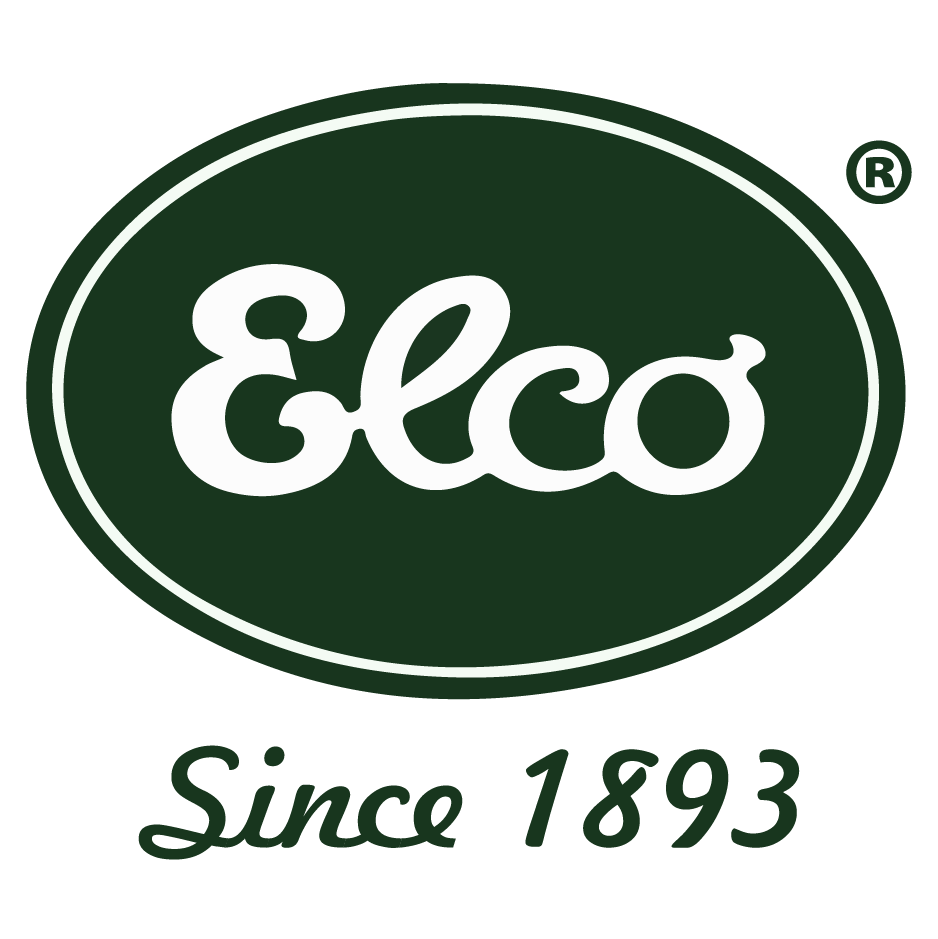
Electric Boat Motors
Compact ⋅ efficient ⋅ reliable, 877-411-3526, the trusted solution for electric boating.
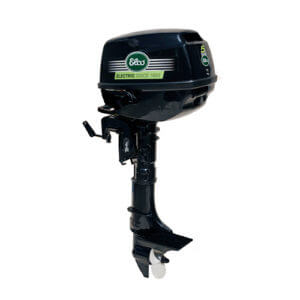
EP-5 Electric Outboard
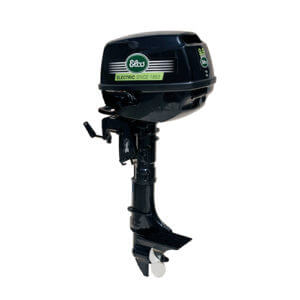
EP-9.9 Electric Outboard
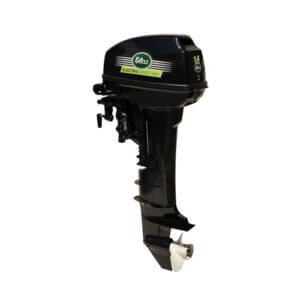
EP-14 Electric Outboard
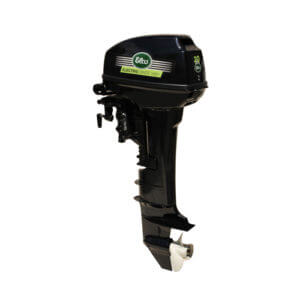
EP-20 Electric Outboard
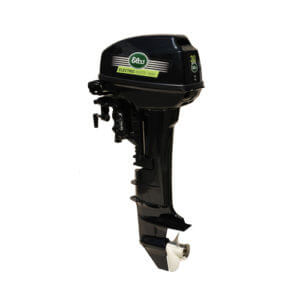
EP-30 Electric Outboard
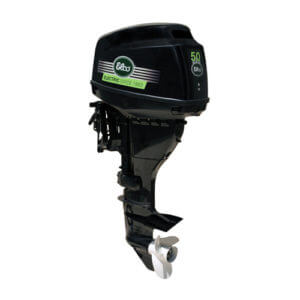
EP-50 Electric Outboard
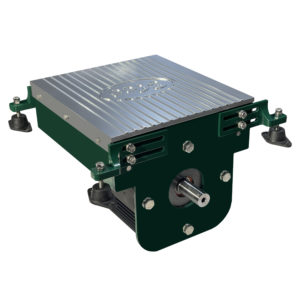
EP-6 Electric Inboard
Ep-12 electric inboard, ep-20 electric inboard.
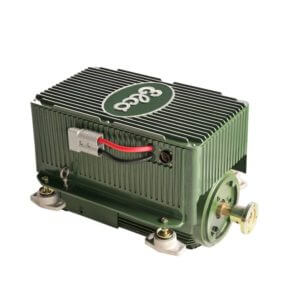
EP-40 Electric Inboard
Ep-70 electric inboard, ep-100 electric inboard.
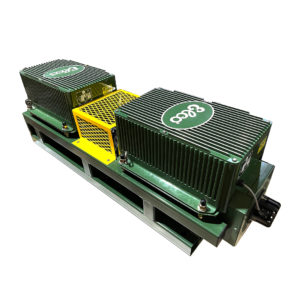
EP-200 ELECTRIC INBOARD
Award winning electric propulsion.

Elco Motor Yachts has been at the forefront of marine innovation, proudly boasting a rich history spanning over 130 years. The company supplied 55 groundbreaking electric launches at the 1893 Chicago World’s Fair. The vessels, powered by Elco’s electric boat motors, swiftly captured the hearts of boating enthusiasts worldwide.
Today, Elco’s award-winning electric outboards and inboards are not only reliable and powerful but also embody the company’s steadfast commitment to sustainability. When you buy an Elco electric motor for your boat, you’re purchasing more than just a product—you’re investing in a cleaner, quieter boating experience.
Whether you need an inboard or an outboard, Elco has the best electric boat motors for sale for you when you’re ready to switch to electric propulsion. Our electric marine motors outshine traditional gas-powered motors. They’re quieter, they’re kinder to the environment, and they’re quality choices. Experience the superior performance and environmental benefits of our electric boat motors today.
Electric Outboards
Traditional on the outside, cutting-edge on the inside
Electric Inboards
All torque, one moving part, and no transmission
Port Elco Club
Check out our latest news and updates from our Port Elco community.
Elco's Story
Our legacy stretches back more than 130 years ago to the 1893 Chicago World’s Fair.
ELECTRIC BASS: Outboard Technology Promises a Bright Future For Urban Bass Anglers
Planing on electric.
Electric Boat Drives
Commercial Fleet
Quick Shopping Links
- Electric Outboard Motors
- Electric Outboard Motor 5 HP
- Electric Outboard Motor 9.9 HP
- Electric Outboard Motor 14 HP
- Electric Outboard Motor 20 HP
- Electric Outboard Motor 30 HP
- Electric Outboard Motor 50 HP
- Electric Inboard Motors
- Electric Inboard Motor 6 HP
- Electric Inboard Motor 12 HP
- Electric Inboard Motor 20 HP
- Electric Inboard Motor 40 HP
- Electric Inboard Motor 70 HP
- Electric Inboard Motor 100 HP
- Electric Inboard Motor 200 HP
Battery Chargers
- NOCO GEN 2 Deep Cycle Battery Charger
- NOCO GEN 3 Deep Cycle Battery Charger
- NOCO GEN 4 Deep Cycle Battery Charger
- NOCO GX2440 Lithium Battery Charger
- NOCO GX4820 Lithium Battery Charger
- EV- AGM / Lithium Battery Charger
- Electric Boat Motor Batteries & Accessories
- Elco Classic Launches
- Elco in the News
- Customer Stories
- Press Releases
- Get Updates
- Benefits of Going Green
- Our Technology
- Frequently Asked Questions
- Honoring Heroes
- Tell us about your boat
- Dealer Application
- Dealer Log-In
- Return Policy
© 2024 Elco Motor Yachts. All Rights Reserved. Sitemap.

- Privacy Overview
- Strictly Necessary Cookies
This website uses cookies so that we can provide you with the best user experience possible. Cookie information is stored in your browser and performs functions such as recognising you when you return to our website and helping our team to understand which sections of the website you find most interesting and useful.
Strictly Necessary Cookie should be enabled at all times so that we can save your preferences for cookie settings.
If you disable this cookie, we will not be able to save your preferences. This means that every time you visit this website you will need to enable or disable cookies again.
- 2024 BOAT BUYERS GUIDE
- Email Newsletters
- Boat of the Year
- 2024 Freshwater Boat and Gear Buyers Guide
- 2024 Boat Buyers Guide
- 2024 Water Sports Boat Buyers Guide
- 2024 Pontoon Boat Buyers Guide
- Cruising Boats
- Pontoon Boats
- Fishing Boats
- Personal Watercraft
- Water Sports
- Boat Walkthroughs
- What To Look For
- Watersports Favorites Spring 2022
- Boating Lab
- Boating Safety
- Ultimate Boating Giveaway

Four Electric Boat Motors Compared
- By Randy Vance
- Updated: September 17, 2020
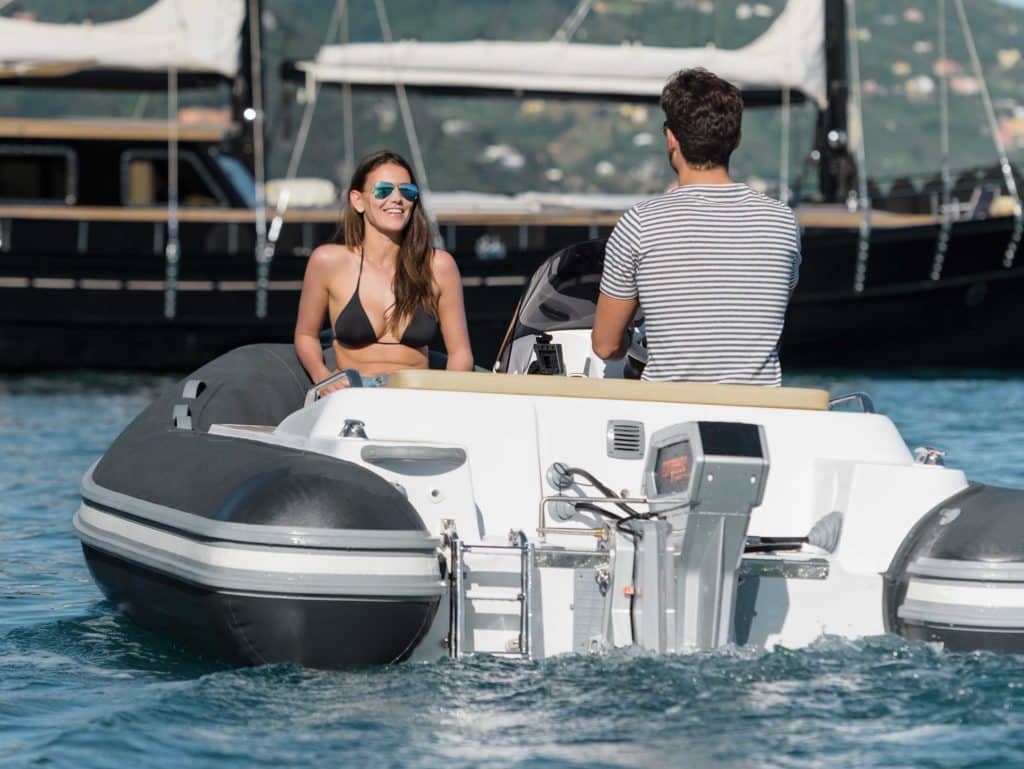
Electric marine propulsion is rapidly advancing in market share while providing a fun and unique boating experience not available from internal combustion power.
Electric Motors Then
You might be surprised to learn that electric boats have been around since 1838. Inventors from Prussia, England and America began making vessels with lead-acid batteries—tons of lead-acid batteries per vessel—to move passengers quietly and efficiently. But the internal combustion engines invented in the late 1800s were more powerful and convenient, and with the exception of Elco electric motors, electric power fell away in popularity. In 1934, Minn Kota manufactured the first electric outboard. Then, in the 1960s, bass tournament fishing popularized big-horsepower gas engines for speed, and electric trolling motors for precise boat handling. You might say the fishermen were ahead of the curve by about 60 years on hybrid boats.
Electric Motors Today
We are focusing on production models that can be easily installed by a do-it-yourselfer or OEM without special training. Lithium-ion batteries can be volatile if not properly installed, so some companies require their trained tech to do that.
Electric outboards are expensive, and while we’ve listed the purchase cost, the batteries available are too numerous to name or price, and can cost more than the motor.
A mathematic equation easily converts kilowatt-hours to horsepower, and our math revealed the calculated horsepower to be considerably less than the equivelant horsepower suggested by manufacturers.
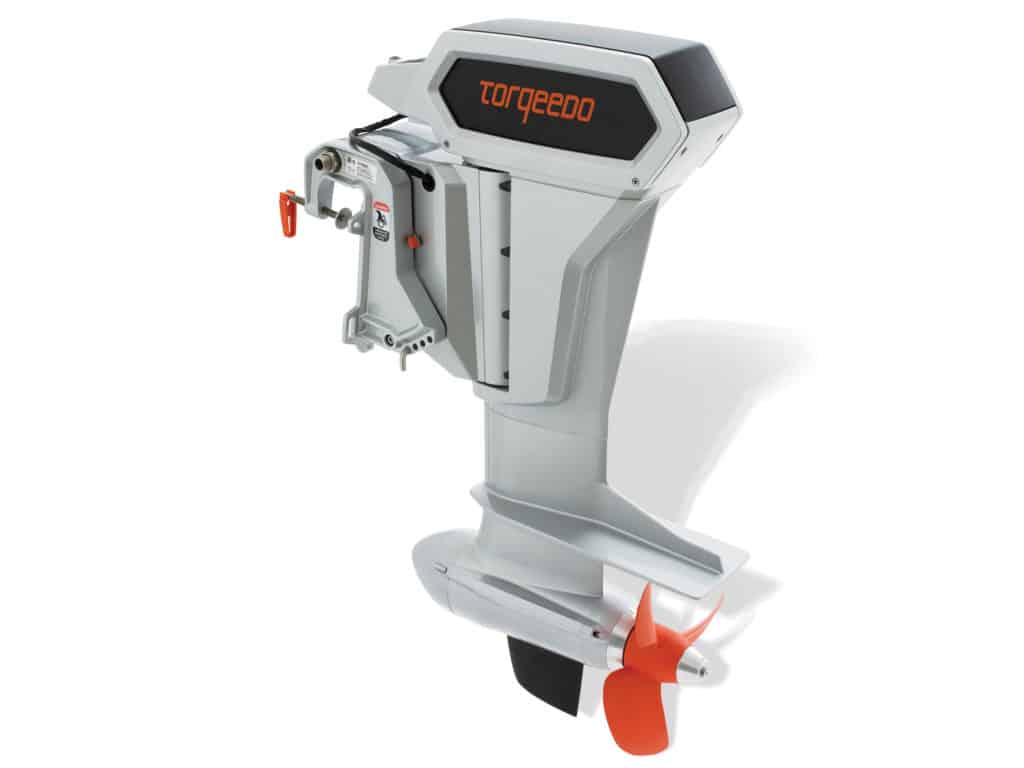
Torqeedo provides completely integrated motor, battery and controls. Electronically controlled systems give its motors greater range per battery capacity and, similar to a fuel gauge, help operators conserve energy when needed or tell them when they can splurge on maximum throttle. The batteries are provided by BMW, but it is Torqeedo’s control system that manages output, heat and recharge operations to protect and optimize battery capacity and motor performance.
Range of Power: Outboards from Ultralight 403 at 400 W (about 1 hp) to Deep Blue at 50 kW (about 80 hp equivalent with 20 percent hole-shot boost), and inboards up to 100 kW (about 135 hp).
Most Popular Motor: Torqeedo’s Cruise 10 ($8,999) puts out 10 kW, or about 14 hp, but performs comparably to a 20 hp outboard thanks to Torqeedo’s software. In remote control, it is popular among pontoon boaters in particular, and commonly installed on pontoons used on neighborhood lakes requiring electric propulsion. Through digital controls, peak output is boosted beyond nominal output for a short time to improve acceleration at the hole shot, then returns to nominal output for optimal heat, range and speed control. A side- or top-mount controller—akin to the throttle—will cost $1,399, by the way.
Best Battery: The Torqeedo 48-5000 (5,000 Wh) lithium-ion battery ($5,159) is rated IP67 waterproof; connecting two or more in parallel extends the range.
Battery Compatibility: Compatible with any lithium-ion or AGM battery bank providing 48 volts, the Torqeedo can only operate in smart mode, measuring discharge, heat and other factors to dynamically manage power with Torqeedo batteries. With nonproprietary battery banks, Torqeedo motors mathematically, and less accurately, estimate range and consumption.
Chargers: The 2213 charger ($899) can recharge a 48-5000 battery in under 10 hours. It is rated IP65 water-resistant. The 2212-10 charger ($2,199) can recharge it in two hours.
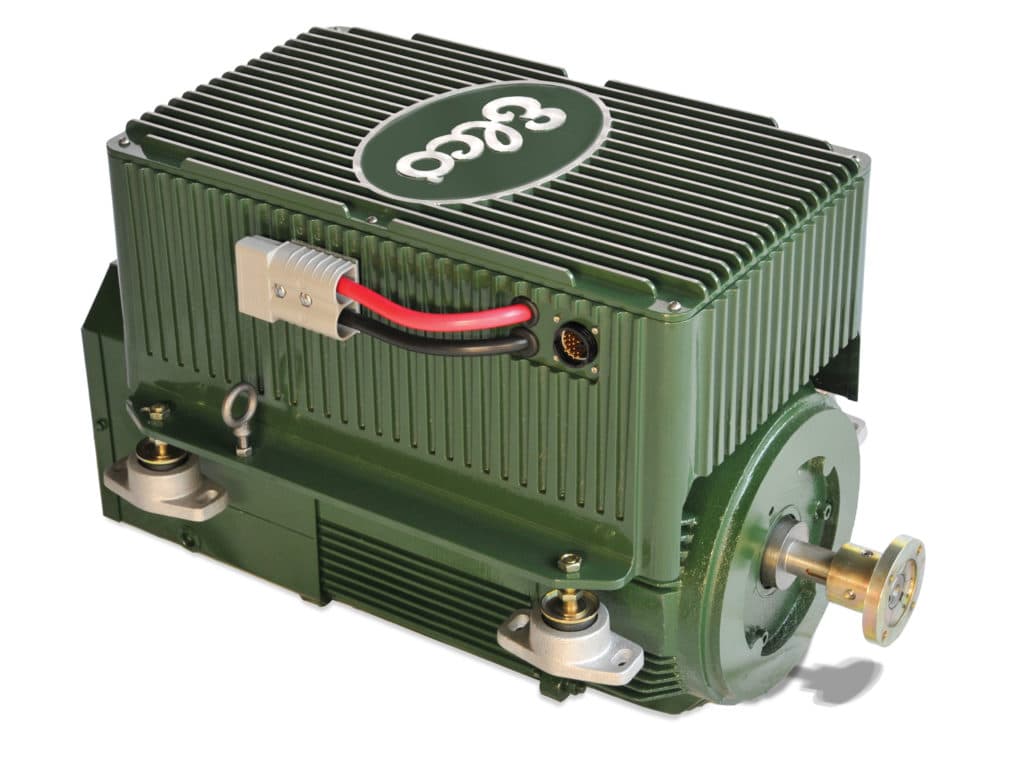
Elco Motors
Elco has been building electric outboards for over 100 years—a figure that seems implausible to boaters who are beginning to see electric propulsion for the first time. The company’s engineering philosophy has remained the same: build plug-and-play systems, relying on battery power preferred by the customer, and design its motors to fit existing motor mounts, or provide standard transom clamps to make repowering simple and seamless.
Range of Power: Elco builds electric outboards with tiller or remote controls from 3.7 kW (about 5 hp) to 37 kW (about 50 hp). Elco’s inboards range from EP 6 to EP 100, with horsepower equivalents from 6 to 100.
Most Popular Motor: The EP 70 inboard ($15,995) can replace inboard diesel kickers and trawler motors, providing a top speed of 8 to 10 mph (7 to 8.5 knots) and a range of 23 to 41 miles. Its peak output is 51.5 kW (about 69 hp), and continuous output is 29.75 kW (about 40 hp). It needs nine 8-D 12-volt AGM batteries for a total of 108 volts. Lithium-ion batteries are also compatible in comparable volts and amps.
Best Battery: Battery banks from Lithionics are most commonly selected for new builds, and an EP-12 Victron AGM Deep Cycle 12V/220Ah bank is ideal ($5,409).
Battery Compatibility: Elco batteries are completely brand agnostic and connect with any quality battery bank providing the motor’s power demand. However, lithium-ion batteries still provide the most efficiency, along with full power to complete discharge. Even though their upfront investment is often more than double that of AGM batteries, the cost per charge is comparable while also lightening the boat and bringing better performance and range.
Chargers: The ElCon UHF3300 (1x) charger (starting at $825) takes three to four hours to restore battery banks, and the PFC 5000 fast charger reduces the time to two to three hours.
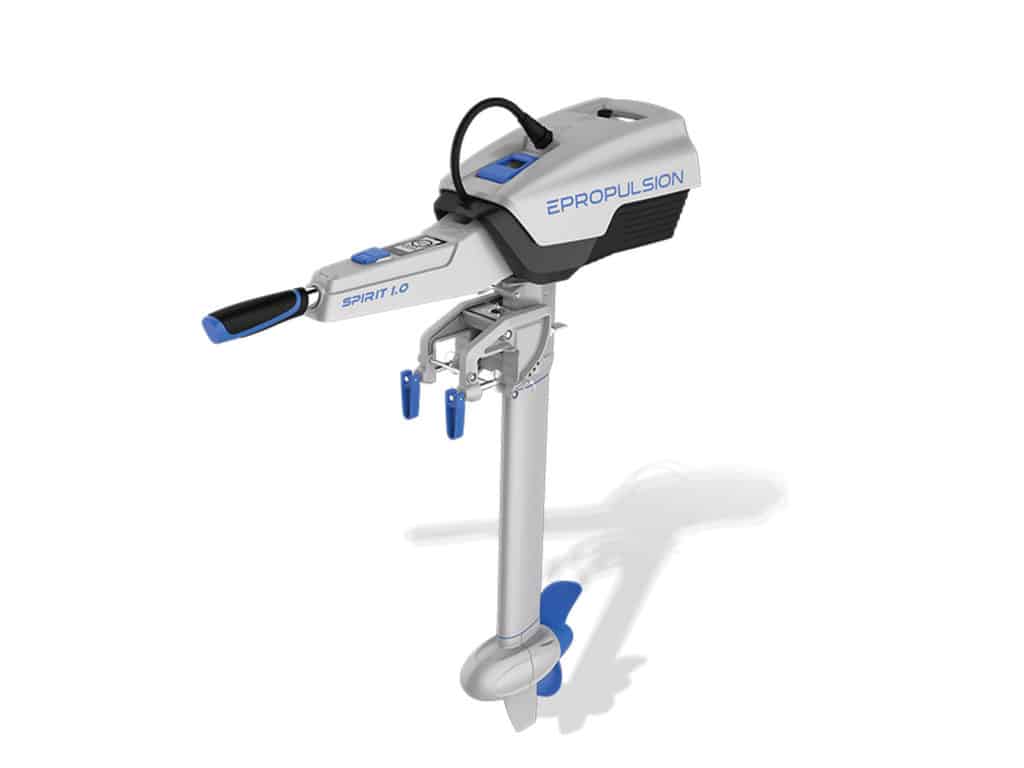
ePropulsion
This company boasts five electric propulsion systems engineered at the Hong Kong University of Science and Technology, and entered the market in 2013. HKUST is also known as the incubator of many electronic products, including the DJI drone. Persistent engineering has brought new innovations to the marketplace.
Range of Power: The smallest offering from ePropulsion is a strap-on stand-up-paddleboard motor. Mainstream power includes two large outboards boasting 1 kW (about 1.35 hp) and 3 kW (about 4 hp) power, two pod drives of the same output, and the most popular portable Spirit 1.0 Plus.
Most Popular Motor: The Spirit 1.0 Plus ($1,999 including charger) is ePropulsion’s top-selling motor, ideal for small vessels, square-stern canoes, tenders and more. It’s a 1 kW motor that the company says offers 3 hp equivalent power with an industry-first direct-drive brushless motor. That’s a quiet arrangement, making the motor lighter and more efficient. It’s got a 75-minute run time at full speed, making 22 miles on a quickly exchangeable, integrated and included floating battery. Take a spare battery ($899) for longer range.
The Navy 3.0, ePropulsion’s latest motor, is 3 kW, or about 4 hp, though ePropulsion claims 6 hp equivalence. It’s available in tiller-steered and remote-control models. Its direct-drive, no-gear-case motor was a breakthrough in electric outboards, using a brushless motor that produced less sound and drag, and increased power and efficiency, offering a more serene experience.
Best Battery: There are three E-Series 48-volt batteries offered: The E40 ($1,200) provides 2,048 Wh, the E80 ($2,000) provides 4,096 Wh, and the E175 ($4,000) offers 8,960 Wh. The data-cable connections in ePropulsion batteries give battery management, enhancing range and speed.
Read Next: ePropulsion Lithium Iron Batteries
Chargers: Chargers available from ePropulsion are 10-, 20- and 30-amp modes ranging from $300 to $620.
Read Next: Learn About Garmin and Lowrance Electric Motors
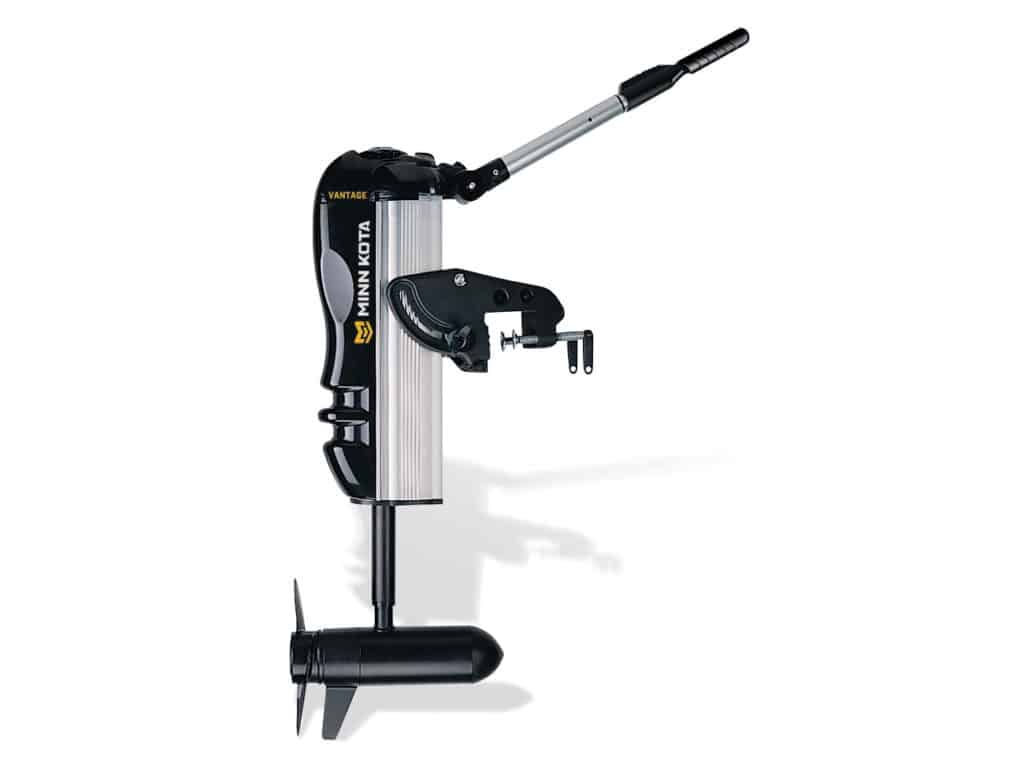
Minn Kota Motors
Minn Kota has been making electric outboard motors since 1934, and its first model was a gear-driven, transom-mounted motor with a tiller. As time progressed, it improved motors slowly until the tournament bass-fishing craze began in the early 1960s. In that time, the motors have been popular as primary propulsion for dinghies and utility boats used for tenders, or positioning the boat for casting.
Range of Power: Models today range from simple tiller- steered motors to digitally remote-controlled motors complete with autopilot features and smartphone compatibility. The Vantage is the company’s primary propulsion motor.
Most Popular Motor: The Vantage ($1,549.99) is not Minn Kota’s most popular motor, but it’s a top contender in the boat market where electric propulsion is desired or required. The tiller-steered Vantage is ideal for use as a kicker for trolling, or propulsion for a tender or small johnboat. The variable-speed motor is digitally controlled to manage and conserve power for optimum range. Forward, neutral, reverse, and power trim to raise it are easily accessible on the tiller of this 24-volt motor. For some reason, Minn Kota does not list specs such as amps, kilowatts or watt-hours.
Best Battery: Minn Kota doesn’t offer batteries, but the motor is compatible with any battery bank producing 48 volts.
Battery Compatibility: Lead-acid, wet-cell batteries are still the most commonly used for small electric motors, but AGM (absorbed glass mat) batteries are more durable, offer more charge cycles, and are quickly replacing wet-cell batteries. Lithium-ion batteries shave 75 percent of the weight of lead-acid batteries, deliver full power to total discharge, and are actually more economical per charge cycle in spite of a 100 percent premium over AGMs.
Chargers: An MK 345 PC Precision Charger ($449.99) provides three-bank charging at 15 amps per bank.
- More: Boats , elco , electric boats , Engines , epropulsion , minn kota , torqeedo
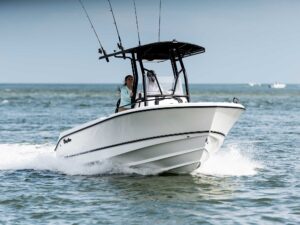
Boat Test: 2024 EdgeWater 208CC Watchman
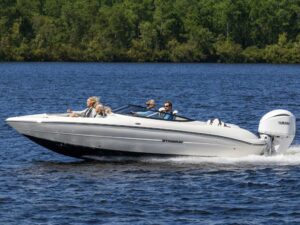
Boat Test: 2024 Stingray 23 OSX
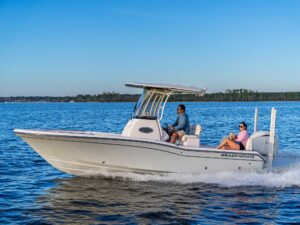
Boat Test: 2024 Grady-White 231 Coastal Explorer
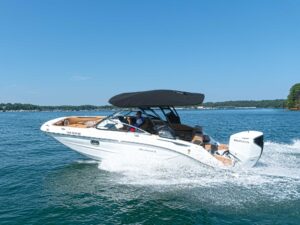
Boat Test: 2024 Hurricane SunDeck 2600 OB
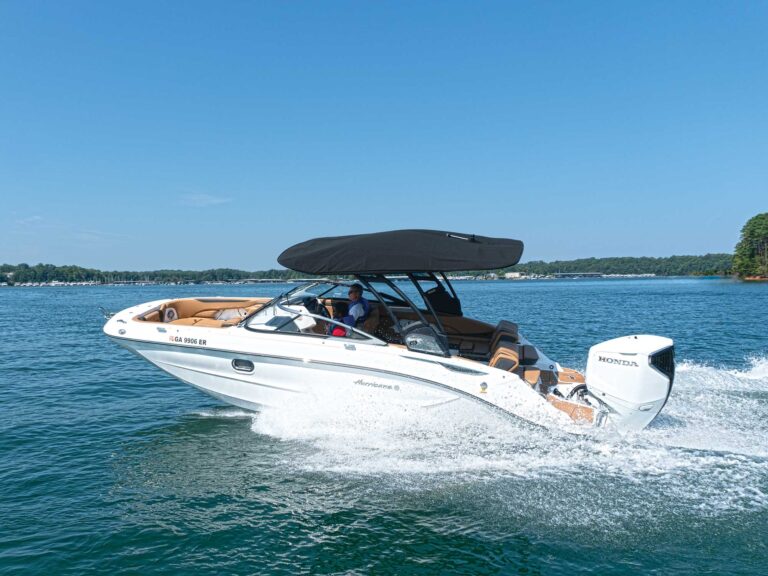
Boat Test: 2024 Brabus Shadow 1200 Sun-Top
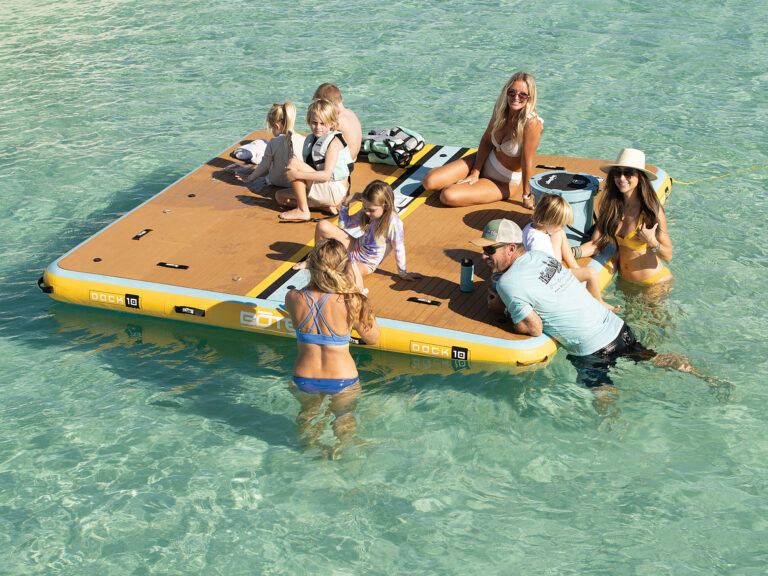
Inflatable Water Mats for Boaters
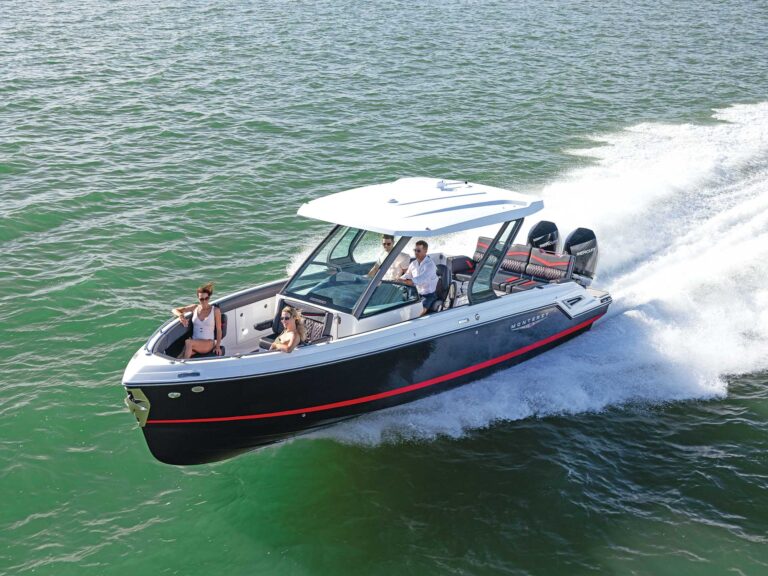
Boat Test: 2024 Monterey Elite 30

- Digital Edition
- Customer Service
- Privacy Policy
- Terms of Use
- Cruising World
- Sailing World
- Salt Water Sportsman
- Sport Fishing
- Wakeboarding
Many products featured on this site were editorially chosen. Boating may receive financial compensation for products purchased through this site.
Copyright © 2024 Boating Firecrown . All rights reserved. Reproduction in whole or in part without permission is prohibited.

Please verify you are a human
Access to this page has been denied because we believe you are using automation tools to browse the website.
This may happen as a result of the following:
- Javascript is disabled or blocked by an extension (ad blockers for example)
- Your browser does not support cookies
Please make sure that Javascript and cookies are enabled on your browser and that you are not blocking them from loading.
Reference ID: bef04f1e-70ab-11ef-94e5-646dacea2fa7
Powered by PerimeterX , Inc.

Signed in as:
Hercules Electric Marine
Introducing Hercules Electric Marine. We are a producer of an electric drive system that is revolutionary in its approach. More horsepower, more efficiency, more control and more pleasure out of your boating experience.
Hercules Signs Supply Agreement with Coach Marine Group
Hercules Electric Marine signs agreement with Coach Marine Group to supply electric propulsion systems for their Coach & Xcursion brand pontoons. Initial deliveries to start in 2023.
Get exactly the power you need! Clean, Quiet and Easy! Just unplug and play!
Available for all boat hull types
Hercules Electric Marine Featured Channel 4 WDIV in Detroit
Electric boats making waves....
Our founders, James Breyer and Julie Tolley were interviewed by WDIV Channel 4 here in Detroit discussing marine electrification as well as our electric propulsion system. We took the reporter, Rod Meloni, and his crew out for a spin demonstrating our system. Electric boats are coming, powered by Hercules!
Why Electric?
We designed a system that is highly capable, offers superior performance to gas engines and can survive harsh environments. An electric propulsion system offers numerous benefits over a gas engine including less maintenance and lower total cost of ownership.
Hercules Product Offerings
Manufacturer, re-power / new power.
Hercules Electric Marine is bringing advanced electric propulsion technology to the boating industry. With our efficient design we offer boat builders design freedom as the Hercules e-Drive system seamlessly integrates into your existing configuration taking up significantly less space than traditional gas or diesel engines.
You can utilize our integrated e-Drive system or we can work together to create a custom solution that will fit your and your customer’s needs. We are bringing quiet, clean, and powerful marine propulsion to recreational boating. 250hp equivalent, multiple battery options, and customization options to provide a superior boating experience. The Hercules e-Drive system can give your customers a better experience than gas engines with no gas, no fumes, no maintenance, optimized performance, and all-day power.
Contact us to find out more or set up a demonstration.
If you are looking to Re-Power or get New Power for your boat our Hercules e-Drive system may be right for you. The Hercules e-Drive system is our proprietary technology platform designed to revolutionize recreational boating. We can create a custom electric solution to fit your current or new boat. Our advanced electric powertrain can be configured to fit almost any boat taking up a fraction of the space of a combustion motor. The Hercules e-Drive system is more efficient, environmentally friendly, requires less maintenance and is more fun than gas outboards or inboards. No more hauling gas cans to the dock or filling up at the marina. Just unplug and go!
The Hercules e-Drive system utilizes powerful permanent magnet motors, all digital drive-by-wire controls, and up to 94kWh of battery storage for all day power. Hercules marine packages include state of the art on-board chargers to charge your craft using 110V, 220V outlets or auto industry fast chargers. This system also acts as a 12V battery to power all your stereos, marine electronics, and accessories all day long. We even have integrated solar charging systems coming soon.
Check out our specs and contact us to see how Hercules Electric Marine can provide you with an electric powertrain without compromise and delivers exactly what you are looking for.
Hercules Electric Marine Platform "Powered by Hercules"
Up to 250 HP marine propulsion with all digital controls and multiple battery options.
Hercules Electric Marine Approach
Powered by Hercules Electric Marine drive system. Take a look. We are coming early 2022. Fun Electrification by Hercules.
Stay tuned for details of our electric boat options.
43100 West 9 Mile Road, Novi, Michigan 48375, United States
Drop us a line!
This site is protected by reCAPTCHA and the Google Privacy Policy and Terms of Service apply.
Have Fun With Hercules Electric Mobility!
Connect with us.
Copyright © 2023 Hercules Electric Marine - All Rights Reserved.
Powered by Hercules
- Privacy Policy
- Terms and Conditions
This website uses cookies.
We use cookies to analyze website traffic and optimize your website experience. By accepting our use of cookies, your data will be aggregated with all other user data.
Yanmar’s Electric Propulsion Systems

Yanmar Offers a New Direction for Marine Power
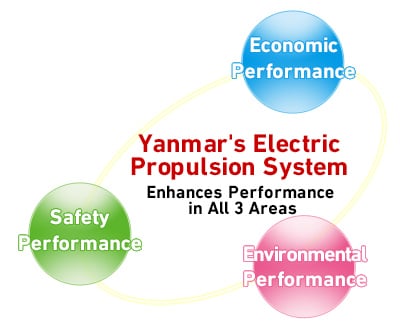
Electric propulsion systems utilize electrical power to drive propeller blades for propulsion. From commercial and research ships through to fishing vessels, over recent years, electric propulsion has gained momentum in a wide range of marine applications across Europe and in Japan. Our power system offers improved economic and environmental performance, with robust reliability and reduced life cycle costs, with consideration for the environment. At Yanmar we handle all areas relating to the electric propulsion system from engine design and manufacture to making hull design improvements.
Electric Propulsion System Overview
A propulsion system that outrivals conventional propulsion engines in efficiency and functionality.
In conventional power system arrangements, the ship’s propellers are driven by a diesel propulsion engine while the supply of electricity for the other shipboard loads is transmitted via the shipboard generators. In electric propulsion systems, the power used to drive the propellers becomes an electrical load meaning that the generators can take care of all shipboard loads. As shown in the diagram below, 3 generator-drive engines are referred to as the "ship’s electric power station" supplying power for both propulsion and electrical requirements on board.
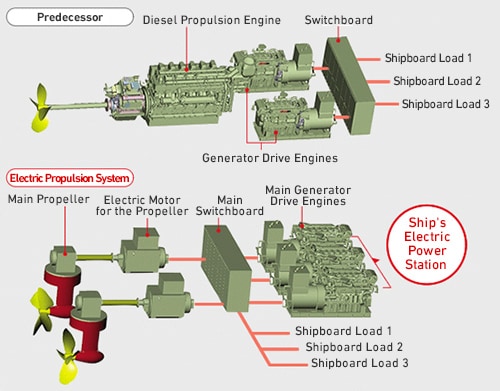

- 12 minutes ago
Hybrid Diesel Electric Yacht from Azimut & Volvo Penta Revealed at Cannes

Azimut and Volvo Penta have partnered to unveil the world’s first yacht that combines Volvo Penta IPS diesel propulsion with hybrid electric power.
The new yacht will is debuting at the Cannes Yachting Festival , which runs from Sept 10th-15th, 2024 in Cannes, France.
Known as the Seadeck 7, the yacht will combine IPS propulsion with that the company calls " hybrid-electric pilot technology."
The system will use Volvo Penta's recently announced D13 IPS hybrid-electric propulsion system .
This marks the first time a yacht combines diesel engines, electric motors, and batteries with the efficiency of Volvo Penta IPS drives, allowing hybrid operation without a generator. The Seadeck 7 can cruise in pure electric mode up to 11 knots and stay at anchor with zero emissions for up to 12 hours, with the aim to significantly enhance onboard comfort and sustainability.

"When it comes to reducing CO2 emissions, our approach is aimed at generating tangible results now, also by developing new solutions that we are already implementing at a prototype stage. Boats under 24 meters are the most prevalent in our waters, therefore making a difference in this segment of vessels means making a difference for many owners. The Volvo Penta hybrid-electric package installed on the Seadeck 7 has a mode of use similar to that of cars, meaning that it shifts from electric to diesel engine based on speed. It guarantees simplicity of use, reduced consumption and CO2 emissions, and improved life on board. Everything is in place to change the rules of the game,” said Giovanna Vitelli, Chair Azimut|Benetti Group, in a press release .
The hybrid-electric yacht experience
The hybrid propulsion system, a pilot of Volvo Penta’s recently announced D13 IPS hybrid-electric package , guarantees smooth transition between power modes. Features include near-silent cruising at low speeds, silent nights onboard using batteries, and Joystick Docking in Electric Mode for smooth docking and departure. The system also facilitates access to emission-free zones, allowing closer encounters with nature.
Compared to traditional planing yachts with an inboard shaft line and a similar size, the Seadeck 7's technological package, extensive use of carbon fiber (up to 40%), and superior hull design efficiency can allow for a reduction in CO2 emissions of up to 40% in a typical year of use.
Pioneering marine innovation
The collaboration with Volvo Penta and Azimut/Benetti R&D Department aims to refine the hybrid-electric yacht experience.
"Our collaboration with Azimut reflects our shared vision to push boundaries and elevate the boating experience through technological innovation and enhanced design. The Seadeck 7, equipped with our fully integrated hybrid-electric system, marks a significant step forward in marine technology. It not only showcases the future of hybridization and electrification but also is designed to ensure an easy and intuitive experience for owners and captains. And we believe an elevated experience will be the ultimate pacemaker for the sustainability transformation,” said Johan Inden, President of the Marine Business at Volvo Penta.
Redefining yacht design
The Seadeck 7, part of Azimut's first hybrid yacht series, features a reinvented cockpit and sea-level outdoor lounge for enhanced water contact, the Fun Island. By combining weight reduction, a carbon fiber hull, deck and superstructure, and Volvo Penta's hybrid-electric yacht system, the Seadeck 7 enhances comfort and space. The Seadeck 7 has obtained the Rina Green Plus Platinum certification, highlighting its commitment to sustainable innovation and design.

A seamless on-water experience
The Volvo Penta hybrid-electric package on the Seadeck 7 offers smooth cruising, an electric boost in acceleration, and excellent driveline response. The extensive battery bank supports off-grid living, providing a close-to-nature experience on the water. The package also features Joystick Docking in Pure Electric mode, which is smooth, responsive, and facilitates ease. Electric yacht cruising at low speeds allows closer proximity to nature and access to protected areas. During nights at anchor, the system enables silent, comfortable off-grid mooring, with batteries recharged during the voyage or while docking.
Flexible power modes
The hybrid-electric package offers four navigation options: Pure Electric mode for zero-emission sailing up to 11 knots, Hybrid Standard mode switching from electric to diesel, Hybrid Boost mode for enhanced acceleration, and the upcoming Cross-over mode. In Hotel mode, the batteries power all services for up to 12 hours in silence and without CO2 emissions, eliminating the need for a traditional generator.

A fully integrated hybrid-electric system
The Volvo Penta hybrid-electric package is fully integrated, with Volvo Penta controlling all components from helm-to- propeller. The Seadeck 7 features a twin Volvo Penta D13 IPS 1350 Hybrid package, paired with a 160kW electric motor, ensuring powerful performance, maneuverability, and efficiency. The electric yacht motor and diesel engine work in parallel, allowing seamless transitions and efficient operation.
Pioneering hybrid-electric features
The hybrid-electric package integrates intelligent technology, including the Volvo Penta Electronic Vessel Control (EVC) and innovative drive modes. These enable Joystick Docking , Joystick Steering, and Dynamic Positioning System (DPS) in both Pure Electric and Hybrid modes. The Glass Cockpit System provides an interface displaying drive modes and battery status. The EVC system allows engine monitoring, and data sharing, ensuring premium support through Volvo Penta’s global service network.
The Seadeck 7 is available for pre-order, with delivery starting in 2026. #news #products #volvopenta #azimut
Recent Posts
Azimut Partners with Google to Test AI for Captains
Volvo Penta Expands Remanufacturing Options for Engines & IPS Drives
Volvo Penta to Launch Diesel-Electric Hybrid Power in Late 2025

Meet the Man Doing The Great Loop on a $300 PWC

Yamaha Reveals Four New JetBlaster Waverunners for 2025

12 Country Songs to Add to Your Summer Boating Playlist

Man Sets 'Great Loop' Record at 19 Days, 19 Hours, 50 Minutes in Quest to Raise Funds for Cancer Research

The 'Breezy Sea' - How A Refitted Lobster Boat from New Brunswick is Changing Lives on a Small Island in Haiti

Is This the New Tesla of Ski Boats?

Michael Jordan Adds Another 'Catch-23' to His Fishing Fleet
672 Wine Club
- Motorcycles
- Car of the Month
- Destinations
- Men’s Fashion
- Watch Collector
- Art & Collectibles
- Vacation Homes
- Celebrity Homes
- New Construction
- Home Design
- Electronics
- Fine Dining
- Benchmark Wines
- Brian Fox Art
- Disneyland Resort
- Ka La’I Wakiki Beach
- Raffles Hotels & Resorts
- Sports & Leisure
- Health & Wellness
- Best of the Best
- The Ultimate Gift Guide
This New Solar-Electric Catamaran Comes With a Massive, Fold-Down Beach Club
The cosmopolitan 125 can cruise the seas with zero emissions, too., rachel cormack.
Digital Editor
Rachel Cormack's Most Recent Stories
- LVMH Could Become a Major Sponsor of Formula 1
- Rolex Is the Go-To Brand for First-Time Watch Buyers, New Data Shows
Axopar Just Unveiled Two Electric Boats Capable of Reaching Thrilling Speeds
- Share This Article

Cosmopolitan Yachts just unveiled an electrifying new catamaran .
Related Stories
This new 72-foot yacht’s new hybrid propulsion system is the first of its kind.
- This Electric Hypercar Just Set the Laguna Seca Lap Record by Accident
- Legendary Formula 1 Car Designer Adrian Newey Is Joining Aston Martin

Described as a floating haven by Cosmopolitan, the multihull has an impressive interior volume of 500 GT and offers nearly 6,500 square feet of deck space. The living quarters are replete with “state-of-the-art amenities and luxurious finishes,” according to the yard.
The spacious layout includes four VIP guest cabins, one owner’s suite with a private terrace, three crew cabins, and a captain’s cabin. The guest accommodation is spread across the lower and main decks, while the owner’s cabin can be positioned on either the main deck or the bridge deck. The crew quarters are located on the lower deck, along with the crew mess, galley, and laundry.
The 125 offers more than just a place to sleep, of course. The main deck is home to a large living room with a TV and game area, while the upper deck is outfitted with a giant dining area and bar. A second bar and a gym can be found on the lower deck. Alfresco lounges are positioned forward and aft, while a helipad sits on the uppermost deck.
One of the standout features of the 125 is the beach club. The innovative platform is fitted with expandable terraces that open directly over the water to transform the stern into what Cosmopolitan calls “a private waterfront resort.” The sprawling space, which affords guests direct and easy access to the sea, can be used for sunbathing, swimming, or sundowners.
Rachel Cormack is a digital editor at Robb Report. She cut her teeth writing for HuffPost, Concrete Playground, and several other online publications in Australia, before moving to New York at the…
Read More On:
- Cosmopolitan Yachts
More Marine

These Otherworldly New 142-Foot Superyachts Were Inspired by the Moons of Mars

This Speedy New 700 HP RIB Can Soar to 55 Knots at Full Tilt

Meet the Wine Club That Thinks Differently.
Receive editor-curated reds from boutique California producers four times a year.
Give the Gift of Luxury
Latest Galleries in Marine

The AX/E 22 and AX/E 25 in Photos

Phobos and Deimos Superyachts in Photos
More from our brands, chappell roan channels her inner witch in sheer gothic gown and metal nails for mtv vmas 2024 red carpet, trump-harris debate outdraws all nfl games besides super bowls, taylor swift remembers 9/11 during acceptance speech at the vmas: ‘that’s the important thing about today’, 3,000-year-old military fort unearthed in northern egypt, the best yoga mats for any practice, according to instructors.
- Today's news
- Reviews and deals
- Climate change
- 2024 election
- Fall allergies
- Health news
- Mental health
- Sexual health
- Family health
- So mini ways
- Unapologetically
- Buying guides
Entertainment
- How to Watch
- My Portfolio
- Latest News
- Stock Market
- Biden Economy
- Stocks: Most Actives
- Stocks: Gainers
- Stocks: Losers
- Trending Tickers
- World Indices
- US Treasury Bonds Rates
- Top Mutual Funds
- Options: Highest Open Interest
- Options: Highest Implied Volatility
- Basic Materials
- Communication Services
- Consumer Cyclical
- Consumer Defensive
- Financial Services
- Industrials
- Real Estate
- Stock Comparison
- Advanced Chart
- Currency Converter
- Credit Cards
- Balance Transfer Cards
- Cash-back Cards
- Rewards Cards
- Travel Cards
- Credit Card Offers
- Best Free Checking
- Student Loans
- Personal Loans
- Car insurance
- Mortgage Refinancing
- Mortgage Calculator
- Morning Brief
- Market Domination
- Market Domination Overtime
- Asking for a Trend
- Opening Bid
- Stocks in Translation
- Lead This Way
- Good Buy or Goodbye?
- Financial Freestyle
- Capitol Gains
- Living Not So Fabulously
- Decoding Retirement
- Fantasy football
- Pro Pick 'Em
- College Pick 'Em
- Fantasy baseball
- Fantasy hockey
- Fantasy basketball
- Download the app
- Daily fantasy
- Scores and schedules
- GameChannel
- World Baseball Classic
- Premier League
- CONCACAF League
- Champions League
- Motorsports
- Horse racing
- Newsletters
New on Yahoo
- Privacy Dashboard
Yahoo Finance
Epropulsion teams up with vision marine technologies to unveil and propel the phantom plastic boat.
MONTREAL, QC / ACCESSWIRE / September 10, 2024 / Vision Marine Technologies, Inc. (NASDAQ:VMAR) ("Vision Marine" or the "Company"),a pioneer in electric marine propulsion, announces its strategic alliance with ePropulsion to empower the groundbreaking Phantom Boat, crafted from innovative plastic rotomolding technology. Following its debut at the Miami International Boat Show, the Phantom is set to showcase a customized electric ePropulsion system. In this partnership, the Phantom will be available through select ePropulsion dealers, both on request and by recommendation across its dealer network.
For over a decade, Vision Marine Electric Boats has relied on ePropulsion for its cutting-edge low-voltage boat propulsion solutions across its product line and to energize its rental boat fleet. This enduring collaboration underscores Vision Marine's commitment to quality and the dependability of ePropulsion's equipment, which has powered over 385,000 boaters in demanding rental environments worldwide.
"At ePropulsion, we're delighted to continue growing our relationship with Vision Marine," said Tom Watson, President of ePropulsion Americas. "Our collaboration on the innovative Phantom marks an exciting new chapter in our partnership, and we're excited to help provide customers with a comprehensive, zero-emission boating solution."
This partnership will offer a comprehensive package for Vision Marine's new Phantom rotomolded boat, blending avant-garde design with proven propulsion technology. Equipped with the 6kW Navy 6.0 Evo system, the Phantom ensures consumers a reliable and high-performance solution. The new X series will also be available on the Volt, a fiberglass sister vessel to the Phantom. The phantom and Vision Marine Electric boats are available visionelectricboats.com .
"ePropulsion emerges as the ideal partner with its extensive expertise in electric propulsion," remarked Alexandre Mongeon, CEO of Vision Marine. "Vision Marine now presents a tested and dependable solution seamlessly integrated into the Phantom, ensuring outstanding performance. With a low-voltage system powering a fully plastic boat, this partnership offers an effortless and efficient solution for our clientele."
Aiming to provide a zero-emission boating experience to a broad audience and democratize access to electric boating, the extensive distribution network of ePropulsion, combined with its proven reliability in electric propulsion, will notably bolster the Phantom's exposure to consumers. This partnership marks the inaugural integration of a low voltage ePropulsion powertrain into such a product, showcasing over 100,000 hours of proven performance.
About ePropulsion ePropulsion was established in 2012 and is led by a team of technology entrepreneurs that are focused on developing uncompromising, superior products. Since the company launched its first electric outboard in 2014 it has fast become a force to be reckoned with in the electric propulsion market with a presence across Europe, the U.S. and Asia.
The company set out with a clear mission to become the global leader in marine electric propulsion systems and services. This pioneering, market-challenging brand is at the very forefront of the industry and is recognized across the world for its exceptional product quality, performance, and technological innovations.
About Vision Marine Technologies Inc.
Vision Marine Technologies Inc. (NASDAQ: VMAR) epitomizes the marine industry's shift towards electric propulsion, offering the pioneering E-Motion™ outboard powertrain system. This innovative technology represents a significant leap forward in marine propulsion, combining advanced battery packs, inverters, and high-efficiency motors with proprietary software and assembly techniques. Vision Marine's commitment to eco-friendly electric powerboats is reshaping the recreational boating experience, offering higher speeds, longer ranges, and smoother rides than traditional internal combustion engine boats. With a focus on design, innovation, and craftsmanship, Vision Marine continues to redefine recreational boating for a more sustainable future.
Forward-Looking Statements
This press release contains forward-looking statements within the safe harbor provisions of the Private Securities Litigation Reform Act of 1995. Such statements include predictions, expectations, estimates, and other information that might be considered future events or trends, not relating to historical matters. These statements involve known and unknown risks, uncertainties, and other factors that may cause actual results, performance, or achievements to differ materially from those expressed or implied by such statements. Vision Marine's Annual Report on Form 20-F for the year ended August 31, 2023, and its periodic filings with the SEC provide a detailed discussion of these risks and uncertainties. Vision Marine does not undertake any obligation to update or revise any forward-looking statements, whether as a result of new information, future events, or otherwise, as required by law.
Investor and Company Contact:
Bruce Nurse (303) 919-2913 [email protected]
SOURCE: Vision Marine Technologies Inc
View the original press release on accesswire.com

English (USA)
English (UK)
English (Canada)
English (India)
Deutsch (Deutschland)
Deutsch (Österreich)
Deutsch (Schweiz)
Français (France)
Français (Suisse)
Nederlands (Nederland)
Nederlands (België)
- Top Capitalization
- United States
- North America
- Middle East
- Sector Research
- Earnings Calendar
- Equities Analysis
- Most popular
- VOLKSWAGEN AG
- AMD (ADVANCED MICRO DEVICES)
- ORACLE CORPORATION
- NIPPON ACTIVE VALUE FUND PLC
- NVIDIA CORPORATION
- Index Analysis
- Indexes News
- EURO STOXX 50
- Currency Cross Rate
- Currency Converter
- Forex Analysis
- Currencies News
- Precious metals
- Agriculture
- Industrial Metals
- Livestock and Cattle
- CRUDE OIL (WTI)
- CRUDE OIL (BRENT)
- Yield Curve
- Developed Nations
- Emerging Countries
- South America
- Analyst Reco.
- Capital Markets Transactions
- New Contracts
- Profit Warnings
- Appointments
- Press Releases
- Security Transactions
- Earnings reports
- New markets
- New products
- Corporate strategies
- Legal risks
- Share buybacks
- Mergers and acquisitions
- Call Transcripts
- Currency / Forex
- Commodities
- Cryptocurrencies
- Interest Rates
- Asset Management
- Climate and ESG
- Cybersecurity
- Geopolitics
- Central Banks
- Private Equity
- Business Leaders
- All our articles
- Most Read News
- All Analysis
- Satirical Cartoon
- Today's Editorial
- Crypto Recap
- Behind the numbers
- All our investments
- Asia, Pacific
- Virtual Portfolios
- USA Portfolio
- European Portfolio
- Asian Portfolio
- My previous session
- My most visited
- Quality stocks
- Dividend Aristocrats
- Undervalued stocks
- Quality stocks at a reasonable price
- Trend-Following Stocks
- Yield stocks
- Cloud Computing
- Europe's family businesses
- Serial buyers
- Unusual volumes
- New Historical Highs
- New Historical Lows
- Top Fundamentals
- Sales growth
- Earnings Growth
- Profitability
- Rankings Valuation
- Enterprise value
- Top Consensus
- Analyst Opinion
- Target price
- Estimates Revisions
- Top ranking ESG
- Environment
- Visibility Ranking
- Stock Screener Home
- Circular economy
- E-Commerce & Logistics
- Semiconductors
- Oversold stocks
- Overbought stocks
- Close to resistance
- Close to support
- Accumulation Phases
- Most volatile stocks
- Top Investor Rating
- Top Trading Rating
- Top Dividends
- Low valuations
- All my stocks
- Stock Screener
- Stock Screener PRO
- Portfolio Creator
- Event Screener
- Dynamic Chart
- Economic Calendar
- Our subscriptions
- Our Stock Picks
- Thematic Investment Lists
Vision Marine Technologies Inc.
Ca92840q1037, recreational products.
| Market Closed - Nasdaq 04:00:00 2024-09-11 pm EDT | 5-day change | 1st Jan Change | ||
| 1.590 | -4.79% | -14.05% | -90.28% | |
| Sep. 10 | CI | |
| Aug. 20 | MT |
- Vision Marine Technologies : Teams Up with ePropulsion to Propel its Phantom Plastic Boat
This press release contains forward-looking statements within the safe harbor provisions of the Private Securities Litigation Reform Act of 1995. Such statements include predictions, expectations, estimates, and other information that might be considered future events or trends, not relating to historical matters. These statements involve known and unknown risks, uncertainties, and other factors that may cause actual results, performance, or achievements to differ materially from those expressed or implied by such statements. Vision Marine's Annual Report on Form 20-F for the year ended August 31, 2023, and its periodic filings with the SEC provide a detailed discussion of these risks and uncertainties. Vision Marine does not undertake any obligation to update or revise any forward-looking statements, whether as a result of new information, future events, or otherwise, as required by law.
Attachments
- Original Link
Vision Marine Technologies Inc. published this content on 10 September 2024 and is solely responsible for the information contained therein. Distributed by Public , unedited and unaltered, on September 10, 2024 at 14:09:06 UTC .
Latest news about Vision Marine Technologies Inc.
| CI | MT | CI | CI | MT | CI | MT | CI | CI | CI | CI | CI | CI | CI | CI | CI | MT | CI | CI | CI | CI | CI | CI | CI | CI |
Chart Vision Marine Technologies Inc.
Company Profile
Income Statement and Estimates
Analysts' consensus, quarterly earnings, rate of surprise.
- Stock Market
- News Vision Marine Technologies Inc.

IMAGES
VIDEO
COMMENTS
Oceanvolt systems are scaled and configured to achieve maximum efficiency - taking into consideration boat length, beam and displacement as well as system weight and placement within the boat. Range, beyond battery capacity, is extended through hydro generation while sailing above 6kn. This can be complemented with either a portable AC ...
The H-100 (60-140kW) is an electric inboard motor with a full displacement of up to 200 tons, designed for large sailboats, catamarans, small passenger and cruise boats, commercial workboats, along with large cruisers or dinghies in fresh water. The new H series electric boat motor will be suitable for various scenarios, including ...
The beauty of electric propulsion: No smell, loud noise, mess, or frequent maintenance. With our safe, instant on, plug and play system, you can enjoy more time on the water without the hassle of an engine. ... Sailing with an Electric Motor In 2021 we installed the QuietTorque™ 10.0 Electric Motor by Electric Yacht on our 1972 Cheoy Lee ...
The typical electric propulsion system for a 10m, 6-tonne cruising yacht will usually be designed to provide around five to six hours of gentle cruising in fairly neutral currents at around 4 knots, or maybe 10 hours of motor-sailing, before requiring a charge. Unlike a car, however, a boat can have solar panels on its deck, coachroof and arch ...
Oceanvolt | Clean electric power & propulsion systems. Batteries. Lithium Ion batteries are superior to other battery storage technology; highest storage capacity, high effective current delivery, high charge capacity resiliency and wide temperature range performance.. Oceanvolt highly skilled technical team ensures proper installation and system-optimization.
Electric marine propulsion is your flexible, future-proof choice. Flexibility is a must for your propulsion system because so many things in shipping are uncertain. ... Marine electric propulsion systems in offshore vessels, cruise ships, tankers, ferries, research vessels, tugs, yachts. Silver Dawn. When Silversea's luxury cruise liner ...
The Arcona 380Z is a standard production yacht that has been adapted for electric propulsion. Note the increased solar panel surface area with soft panels bonded to the sails. Credit: Jukka Pakainen. A modern electric yacht can come in all shapes and sizes, from the latest high-tech speed boats with recently developed high-performance electric ...
Azipod® electric propulsion. Azipod® propulsion is a gearless steerable propulsion system where the electric drive motor is housed within a pod outside the ship hull. Azipod® units can rotate 360 degrees, increasing maneuverability and operating efficiency of vessel, while cutting fuel consumption by up to 20 percent compared to conventional ...
The company provides lithium battery solutions, data and monitoring systems, electric propulsion, and matched propeller systems. Yacht dealers. A small but growing number of yacht dealers offer new and used electric boats. Green Yacht Sales is an example of a small company that supports the sale of electric yachts and systems from diverse ...
ALVA Yachts, the German builder of luxury electric solar catamarans and sail boats, has announced it is currently building the world's first fuelless 90ft superyacht catamaran with wings, the OCEAN ECO 90 H2. The first superyacht catamaran to run without fossil fuels and producing zero emission, the OCEAN ECO 90 H2 is designed with luxury ...
Award Winning Electric Propulsion. Elco Motor Yachts has been at the forefront of marine innovation, proudly boasting a rich history spanning over 130 years. The company supplied 55 groundbreaking electric launches at the 1893 Chicago World's Fair. The vessels, powered by Elco's electric boat motors, swiftly captured the hearts of boating ...
Explore the future of marine propulsion with Beta Marine's cutting-edge electric motors designed for yachts and narrowboat inboard engines. Our innovative electric propulsion systems offer a clean, efficient, and sustainable solution for boating enthusiasts. Experience the power of eco-friendly navigation with Beta Marine, where advanced ...
The Vantage is the company's primary propulsion motor. Most Popular Motor: The Vantage ($1,549.99) is not Minn Kota's most popular motor, but it's a top contender in the boat market where electric propulsion is desired or required. The tiller-steered Vantage is ideal for use as a kicker for trolling, or propulsion for a tender or small ...
At Powerflow Marine we know how much time it takes to maintain a boat. That's why we've developed propulsion systems that are reliable and efficient alternatives to diesel or gas engines. We can assist during your conversion planning with video consultations and wiring diagram creation. We have the ability to add on Victron Energy equipment ...
Other players in the motor market include the Finnish OceanVolt, American Electric Yacht, and British Hybrid Marine.California-based Electroprop sells pre-packaged 6 and 21 kW systems that boat builders can drop into their existing engine rooms. Swedish diesel engine giant, Volvo Penta, in 2019 announced the intention to introduce electric motors installed inline between their diesels and IPS ...
Pure Electric Inboards. The most successful electric propulsion retrofits have happened on inboard boats, with drop-in electric motors that directly replace your old, dead gas or diesel engine. Remove your old Atomic 4 or diesel, clean out the toxic leftovers, remove the old fuel tanks, adapt the engine mounts, and install the electric drive ...
Hercules Electric Marine is bringing advanced electric propulsion technology to the boating industry. With our efficient design we offer boat builders design freedom as the Hercules e-Drive system seamlessly integrates into your existing configuration taking up significantly less space than traditional gas or diesel engines.
The first electric motor-powered boat was demonstrated by its inventor, German physicist Moritz Von Jacobi, who took 14 people across the river Neva in the middle 1830s. He was financed by Tsar Nicholas I and invented a boat with batteries powering an electric motor turning a paddle wheel. A Tutorial on Electrical Propulsion for Boats.
Yanmar Offers a New Direction for Marine Power. Electric propulsion systems utilize electrical power to drive propeller blades for propulsion. From commercial and research ships through to fishing vessels, over recent years, electric propulsion has gained momentum in a wide range of marine applications across Europe and in Japan. Our power ...
The hybrid propulsion system, a pilot of Volvo Penta's recently announced D13 IPS hybrid-electric package, guarantees smooth transition between power modes.Features include near-silent cruising at low speeds, silent nights onboard using batteries, and Joystick Docking in Electric Mode for smooth docking and departure.
Azimut and Volvo Penta are unveiling the world's first yacht - the Seadeck 7 - to combine Volvo Penta IPS with hybrid-electric power.
Today, Vessev publicly shared images and footage of its first completed VS-9 electric hydrofoil boat build. Our previous coverage of the vessel included photos of the boat tub only; the one ...
The new Cosmopolitan 125 catamaran features a hybrid solar-electric propulsion system for zero-emission cruising and a huge beach club for fun at sea.
For over a decade, Vision Marine Electric Boats has relied on ePropulsion for its cutting-edge low-voltage boat propulsion solutions across its product line and to energize its rental boat fleet.
Equipped with an electric hydro-jet propulsion system, this PWC promises to offer riders a sustainable, efficient, and thrilling way to glide over the water ... striking electric boats ever made ...
ePropulsion, the global leader in marine electric propulsion systems and services, announced today at SMM 2024 that it has established a new business unit - ePropulsion Commercial.
A variety of other electric boats, in a range of different styles, are being made by a list of others, including Vision Marine, Ingenity, RS Electric, Duffy Boats and Rand Boats. Compared to electric cars, the market for electric boats is a drop in the bucket. Worldwide sales of electric boats stood at just $5 billion in 2021, and even with ...
Montreal, QC, September 10, 2024 - Vision Marine Technologies, Inc. (NASDAQ: VMAR) ("Vision Marine" or the "Company"), a pioneer in electric marine propulsion, announces its strategic alliance with ePropulsion to empower the groundbreaking Phantom Boat, crafted from innovative plastic rotomolding technology. Following its debut at the Miami International Boat Show, the Phantom is set to ...
The pneumatic system offered a 6% boost in propulsion force and reduced carbon footprint by 307 kgCO2/year compared to electric systems. Updated: Sep 10, 2024 05:19 AM EST Jijo Malayil
Yachts and boats rental in Vladivostok, Primorsky Krai. Found 5 rental boats in Vladivostok, Primorsky Krai ₽ 18,200 /quarter day (2 hours) Evgeny. Аренда моторной яхты во Владивостоке Vladivostok, Primorsky Krai 43 ft., With a captain ...